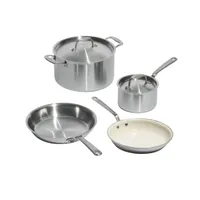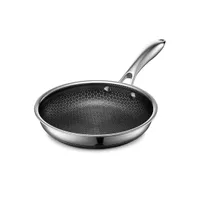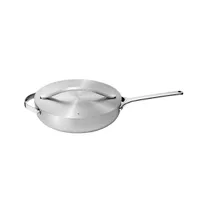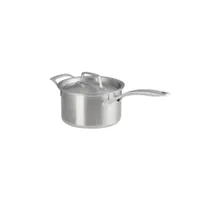How to Choose the Best Cookware – A Chef's Guide to What to Buy, the Brands to Trust and How to Get the Best Value for Money
I've tested 20 of the best cookware brands – here's how to stock your kitchen with the most reliable pots and pans

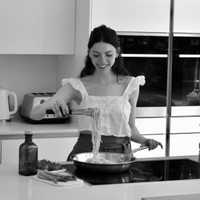
30th November: I've been tracking the prices over Black Friday weekend, so you can get the best cookware for less. There are still discounts to be had on reputable brands, you'll find them linked them below.
A conveyor belt of pots and pans comes and goes in my kitchen. Non-stick, copper, stainless steel... I’ve tried them all. As a trained chef who cooks at home daily and works as a product tester, it is my passion and profession to test the best cookware on the market.
From the best non-toxic cookware to the best Dutch ovens, I've seen what works and what wears out sooner than I'd like. That's why I've curated this guide: your one-stop resource for finding the best cookware for your needs.
Rather than a simple list of pots and pans, this guide is organized to help you find cookware that suits your kitchen style, your budget, and the dishes you cook most often. For a clear look at the most reliable names, start with the best cookware brands. If you're lost in the nomenclature of various pots and pans, I'll explain how to choose the right pieces for your kitchen, the cookware material most suited to you, and where to shop, too.
Best Cookware Deals Right Now
Value for money is a non-negotiable. Luckily, Black Friday home deals are still on offer this weekend. I can recommend the tried-and-tested buys below.
If you don't have time to read this entire guide, honestly, just get this set. It combines the best ceramic non-stick pan with a practical, durable stainless steel trio: a saucepan, stock pot, and skillet. That's everything you'll need for most cookery, and you'll never look back.
The famous French brand has knocked $100 off this iconic pot. It is a good size for smaller families. The orange colorway is certainly bright, but it was the original Le Creuset shade way back in 1925 and has recently been celebrated by Pantone.
Gordon Ramsey's favorite. When I was working as a recipe editor, we used this frying pan to test and shoot small recipes, particularly fried eggs and individual omelets.
Versatile, beautiful, and built to last. This Caraway pan is best for shallow frying, tossing pastas, and simmering curries. I love the minimalist lid.
A small stainless steel saucepan is essential for sides dishes and sauces. The material is very heat-responsive and it adds a 'pro-level chef' aesthetic to the kitchen.
Where to Shop the Best Cookware Brands
Retailer | What they stock | Delivery info |
Most major brands across all price points (from Le Creuset to Lodge) with frequent deals, and useful shopping filters. | Amazon Prime members can get free next-day delivery on eligible items. | |
Affordable Martha Stewart sets to luxe Le Creuset items. | Look for 'Ships Free' next to qualifying items. | |
Enormous selection, including Stanley Tucci exclusives and Ruffoni copper cookware. | Free shipping to your home and to your nearest store. | |
Stocks affordable brands like Cuisinart and Lodge, but you can also find huge deals on luxury cast iron from Staub. | Ships free if you spend over $35 (not all brands are available in-store). | |
Premium sets, from All-Clad to KitchenAid. | Free shipping on orders of $49. | |
Direct to Brand, eg. Made In, Caraway Home, Our Place, HexClad | Shopping directly from cookware brands brings perks like seasonal discount codes, exclusive bundles, and loyalty schemes. | Brand dependent. |
Best Cookware Brands
Every single one of the brands below has been thoroughly tried and tested firsthand. I told you, I do a lot of cooking! I’ve highlighted which types of cooks each brand best suits (because not everyone has the same requirements in the kitchen), along with my top three product recommendations from each range and insider tips on how to find the best deals.
Le Creuset

Best for: A lifetime of flavorful braising, baking, and timeless beauty.
I've cooked with some of the best cast iron cookware on the market, and Le Creuset always comes out on top. The brand has been making cookware since 1925. Each Dutch oven is cast in sand, polished and finished by hand, then coated with porcelain enamel for durability and fired for heat resistance.
Like many keen cooks, I was introduced to the brand by my parents. My mom actually taught me how to cook with her Le Creuset pot (the best Dutch oven), which was a wedding gift 30 years ago. Three decades later, she’s still using it to bake bread and simmer casseroles. It continues to look good and perform well.
When people ask me, 'Is Le Creuset worth the money?' I think the rare combination of beauty, functionality, and durability is worth every penny.
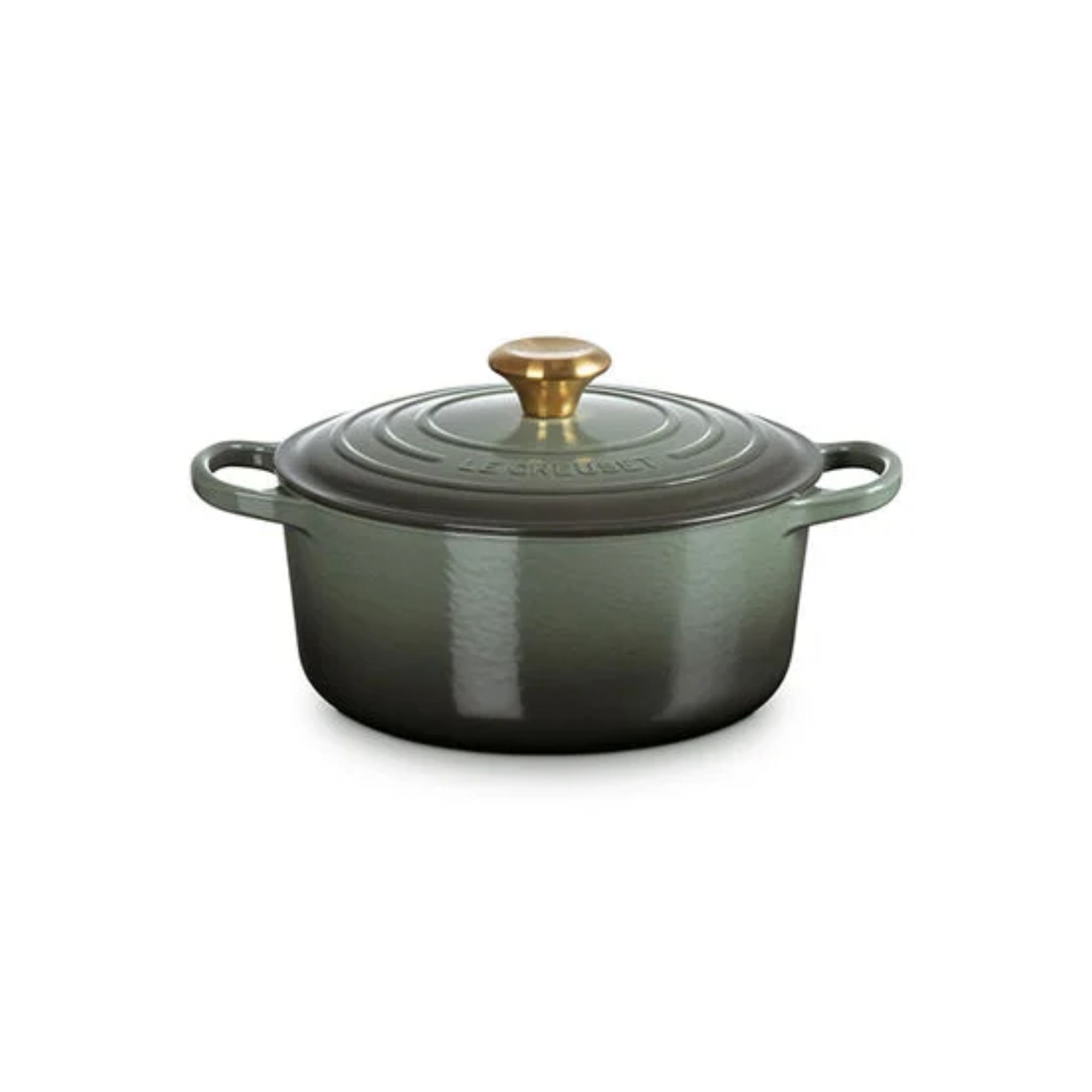
Every kitchen needs a Dutch oven, and Le Creuset's is the best one money can buy. It is essentially a heavy-duty, oven-safe pot with a smooth enamel surface and a tight-fitting lid to stop steam from escaping. The design enhances the natural flavors of your food and is a joy to cook with.
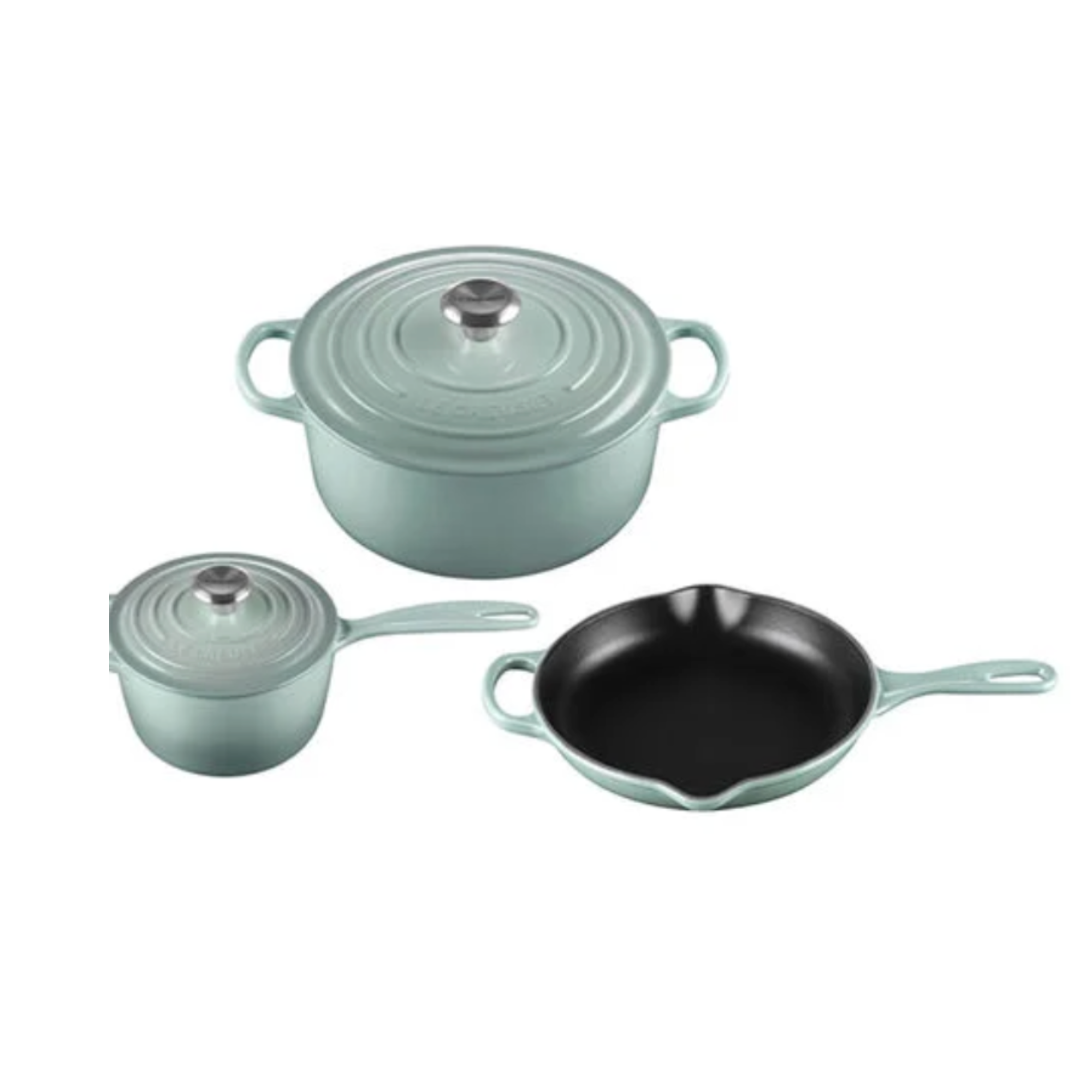
If you're looking for a practical set, this three-piece set is available in some really gorgeous colors and includes Le Creuset's famous Dutch oven, cast iron enamel fry pan, and a small saucepan for sauces and side dishes.

From bubbling fruit cobblers to cheesy lasagnas and more, this trio of baking dishes is my go-to for family meals. They are sturdy, even-heating, and they couldn't be easier to clean, thanks to the glossy enamel.
When to get the best Le Creuset deals
Unless you’re lucky enough to receive a Le Creuset item as a gift, the upfront cost can feel like a splurge. It's worth looking for items in the Le Creuset clearance section, and bookmark your shopping for Black Friday (the last weekend of November) or Amazon Prime Day (a bi-annual event, typically in July and October at Amazon).
I also tend to find great discounts when a colorway is discontinued (I recently covered the sales when Le Creuset's Caribbean shade discontinued, and this seems to happen at least once a year).
Where to buy Le Creuset cookware
You'll find over 1,400 options, including all the latest colorways and seasonal SKUs at Le Creuset USA. Otherwise, you'll find Le Creuset classics, bakeware, and dinnerware in exclusive shades at Crate & Barrel, and a wide selection at Amazon and Macy's.
Made In
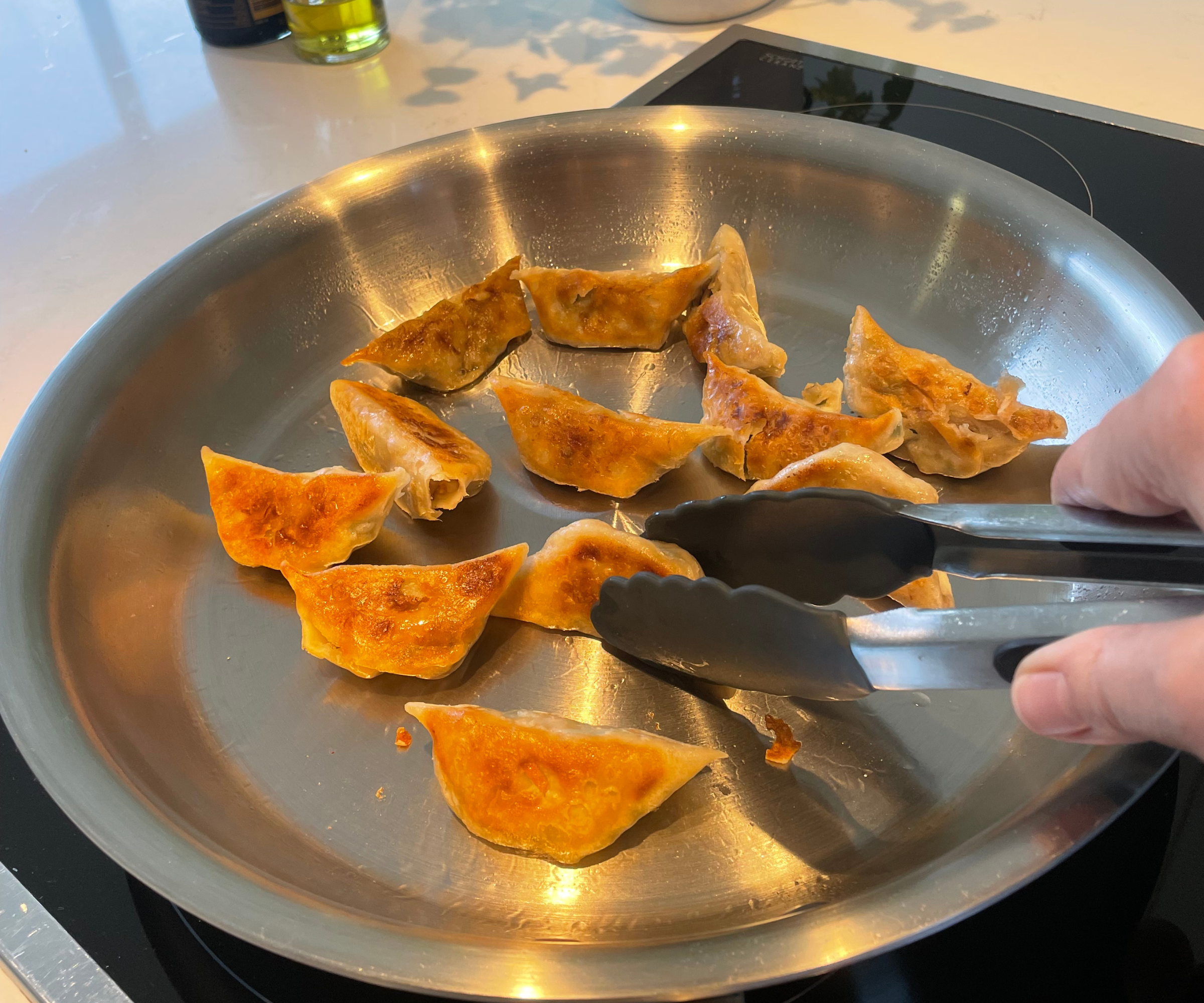
Best for: Durable, restaurant-quality stainless steel and PFAS-free non-stick.
I’ve cooked with some of the best stainless steel cookware out there, but Made In continues to impress me the most. Though the brand is relatively young compared to heritage names, its roots run deep. Co-founder Jake Kalick’s family has been in the kitchen supply business in Boston since 1929.
I first discovered the brand through the chefs I admire most, who actually use Made In in their restaurants. Each piece is crafted with premium materials and designed in collaboration with chefs who use them daily in professional kitchens.
As a trained cook myself, I gravitate towards the Made In stainless steel pan for its durability and sear – but I also enjoy using their CeramiClad non-stick fry pan for cooking perfect fried eggs and golden tofu.
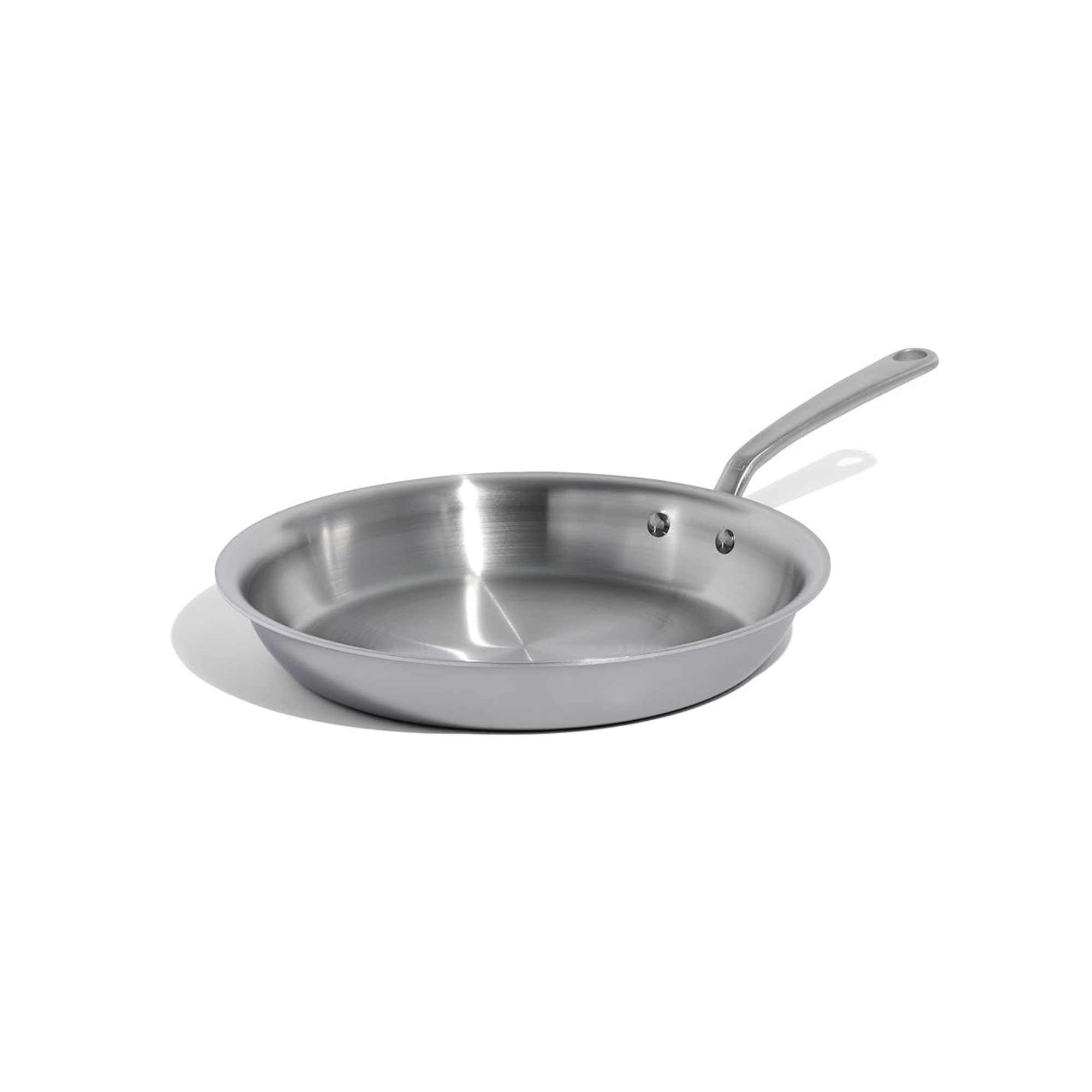
This stainless steel pan heats evenly, you don't need to worry about leaching or scratching, and you'll get a pro-level, golden sear. It is a fantastic value for money and a trusted brand among restaurant chefs.
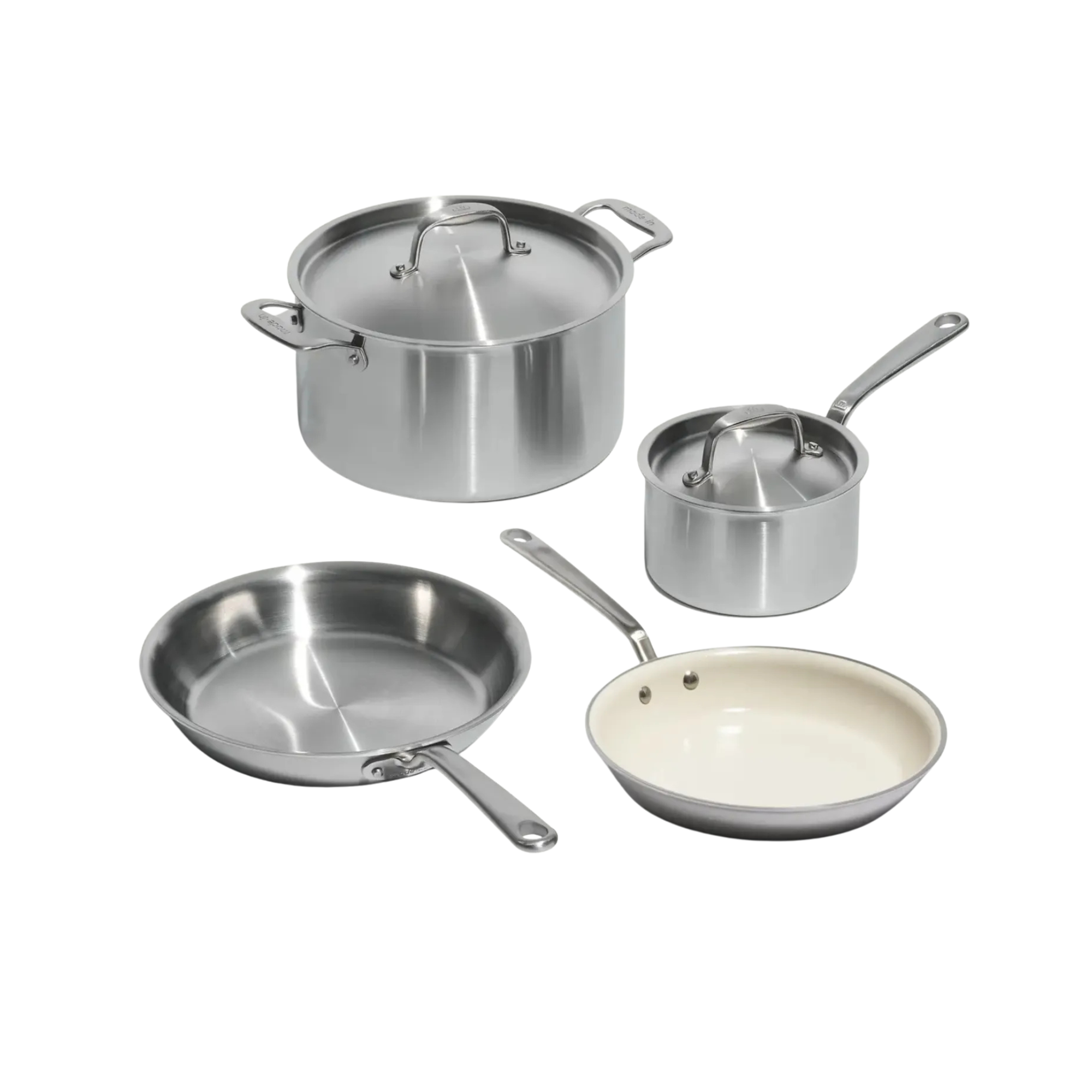
If I could invest in my cookware collection from scratch, I would pick this set without a doubt. It has my favorite stainless steel fry pan, as well as the ceramic alternative for more sticky, delicate ingredients. The stock pot is immensely useful for boiling pasta and soup, and the small saucepan will stand you in good stead for sides and sauces. It's all non-toxic and highly durable.
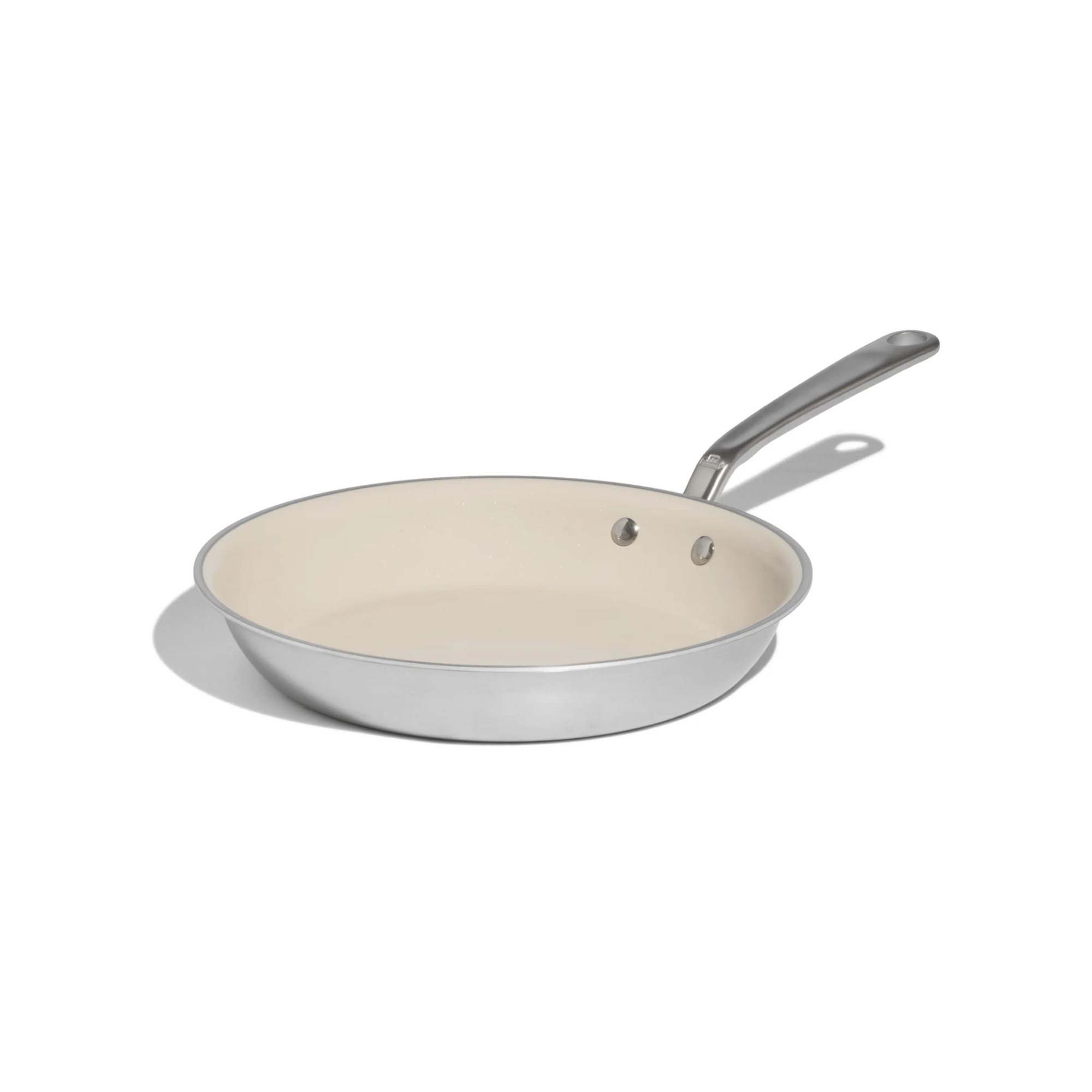
Made In's non-stick is by far the best ceramic pan I've tried. It's lightweight and fool-proof for frying eggs and delicate ingredients, but you still need to take care not chip or damage the coating.
When to get the best Made In deals
In my experience as a cookware editor, Made In isn’t as frequent with its discounts as other brands. Your first port of call should be the 'Bundle and Save’ section on the Made In website, where you can often pick up sets at a better value than buying individual pieces. Otherwise, watch for end-of-season sales (typically in July and January), as well as Black Friday and Amazon Prime Day deals – those tend to be the best times to snag savings.
Where to buy Made In cookware
All the latest launches are available at Made In website; you can also find the limited-edition pans with brass handles at Crate & Barrel, as well as select pieces at Macy's or the Amazon storefront.
HexClad
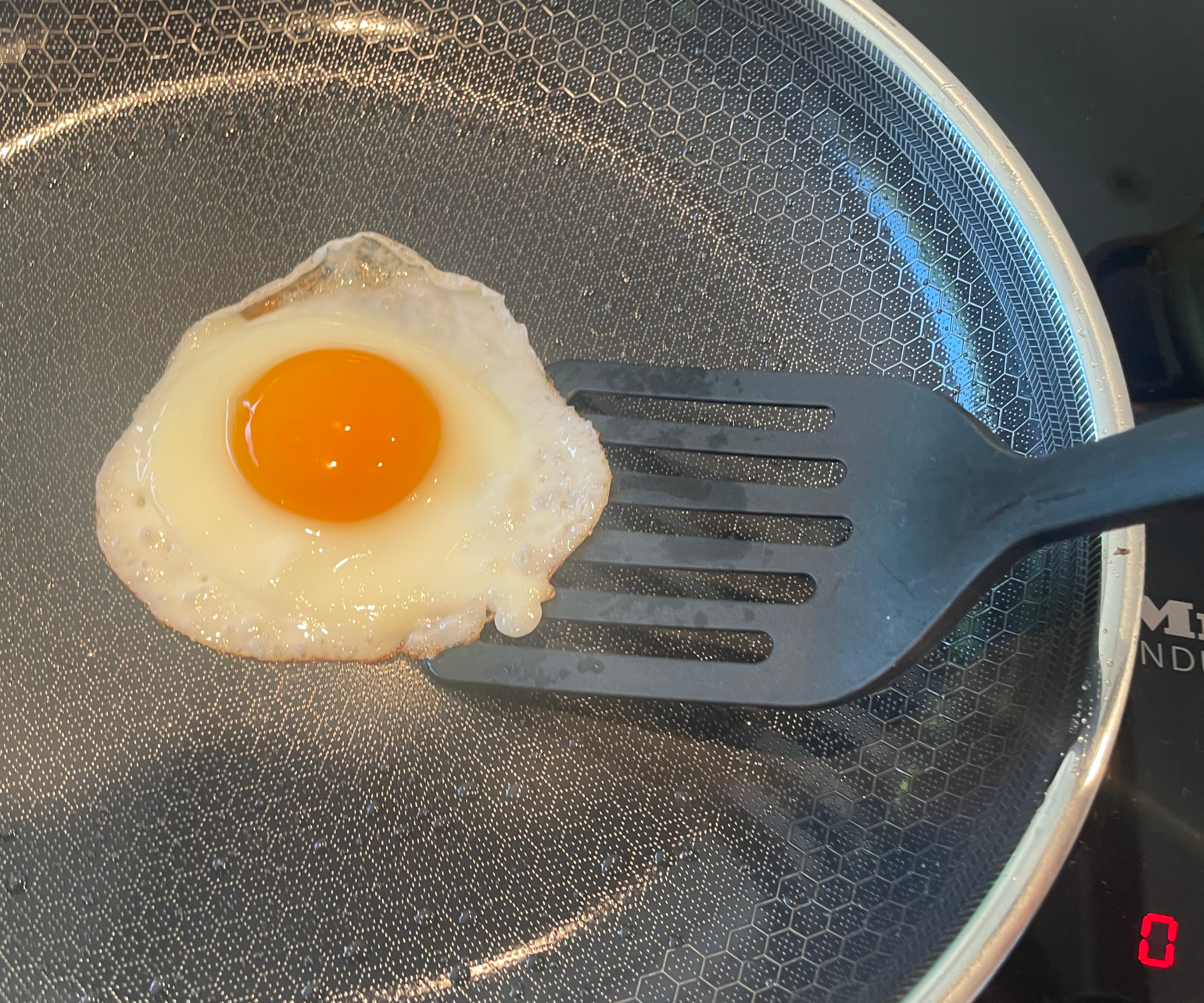
Best for: Serious non-stick searing and easy cleaning.
If you admire Gordon Ramsay, you’ve probably heard of HexClad – makers of one of the best non-stick fry pans on the market, co-founded by the famous chef himself.
Many people ask me: Is HexClad worth it? And I do recommend the hybrid surface to most cooks. It combines pro-level stainless steel peaks with a beginner-friendly ceramic non-stick base. The tri-ply stainless steel layers encased around an aluminum core provide exceptional heat control and distribution, ensuring pro-level golden sears on meat and fish.
Meanwhile, the signature hexagonal surface handles even the stickiest ingredients – from fried eggs to tofu and halloumi – with effortless release and minimal upkeep. It’s cookware designed for beginners and pros alike, with very little learning curve.
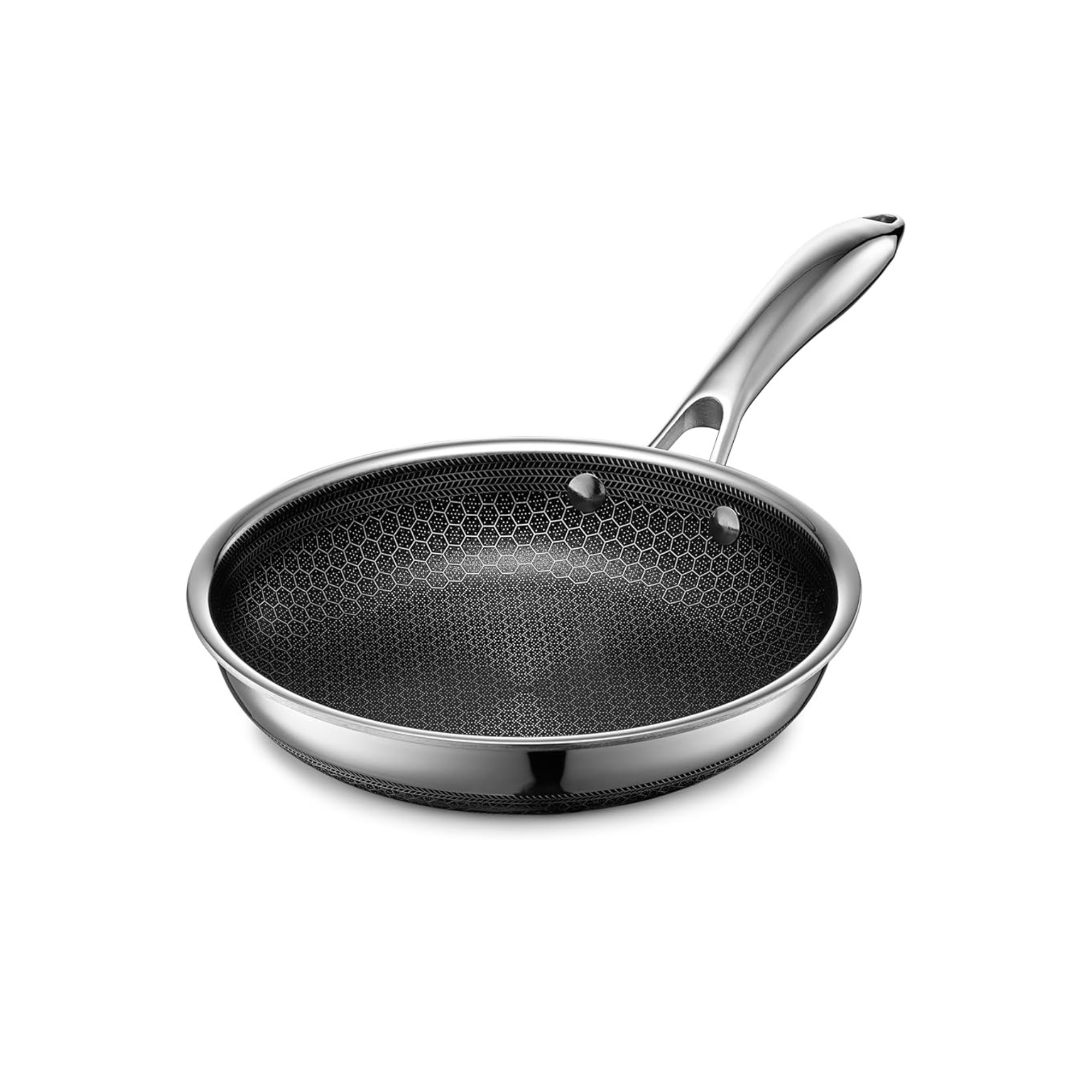
For sizzling steaks and searing seafood, you need this flat, heavy-bottomed pan with low sides. Twelve inches is sufficient for cooking two steaks at once. If you tend to cook one steak at a time, you can go down to the 10-inch size.

This 'Starter' set includes a classic pan and pot with tight fitting glass lids. I didn't think I needed a HexClad saucepan before I got one, but now I wouldn't be without it. The non-stick is a lifesaver when I'm cleaning off tomato sauces, oatmeal, and sticky chocolate sauces.
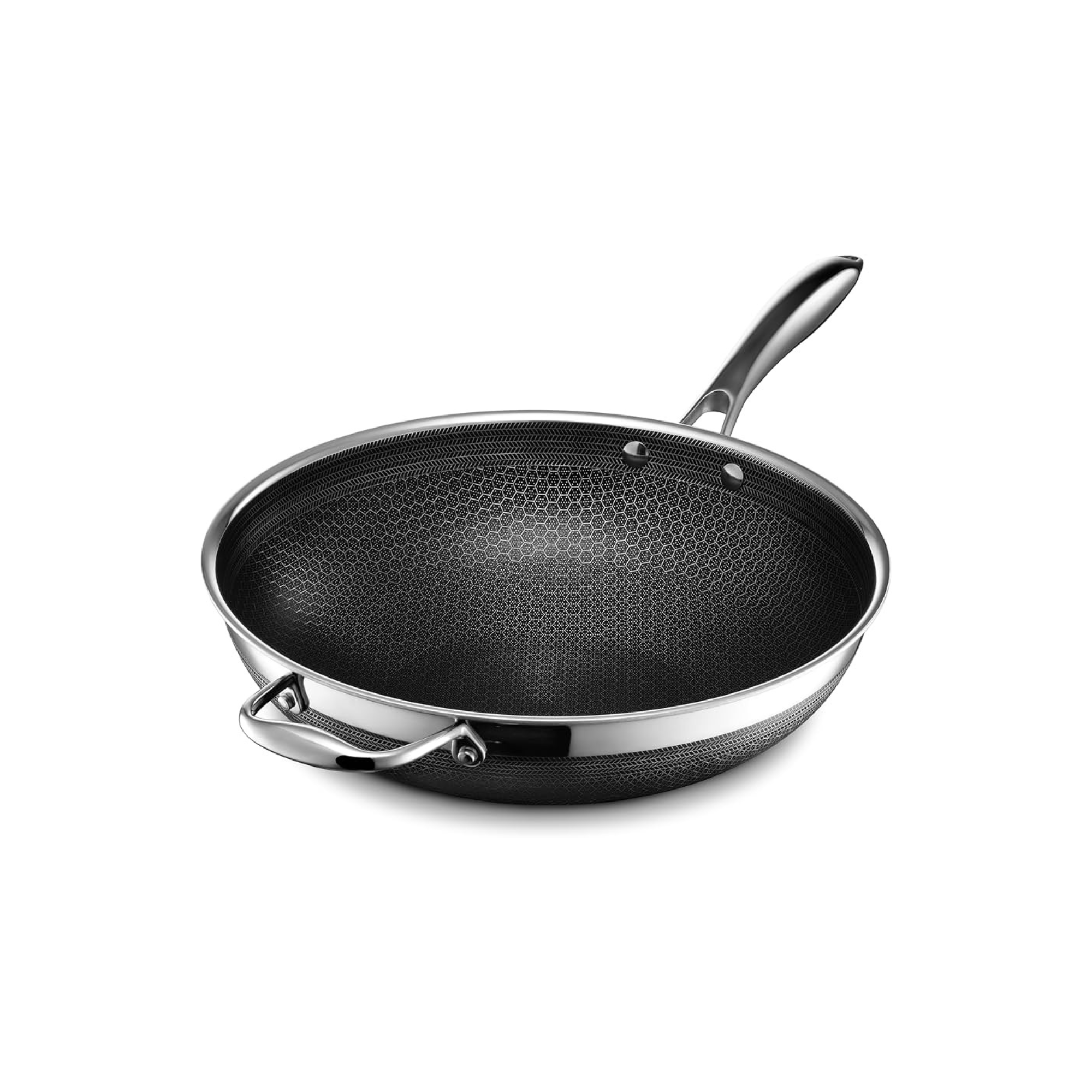
If you love Asian cuisine but hate cleaning sticky sauces and burnt vegetables off your pan, you'll love the HexClad wok. It can sizzle and stir-fry without sticking, and it cleans up without a hitch.
Where to shop HexClad
In my experience, you need to go straight to the source for a good HexClad sale. The HexClad website runs regular seasonal promotions, and they often bundle cookware together (think knives, mixing bowls, pans, and lids) so you get a bigger saving. After that, the HexClad Amazon storefront is your best bet.
When to get the best HexClad deals
You'll see the biggest HexClad discounts drop on Prime Day and Black Friday. Last Black Friday, I tracked savings of up to 40% off larger cookware sets and HexClad knives – making it a good time to grab multiple pieces if you need a kitchen refresh (or you're shopping for gifts).
Holiday weekends, like the 4th of July and Labor Day, also bring seasonal-themed promotions on HexClad griddles, pizza stones, and BBQ gear.
Lodge
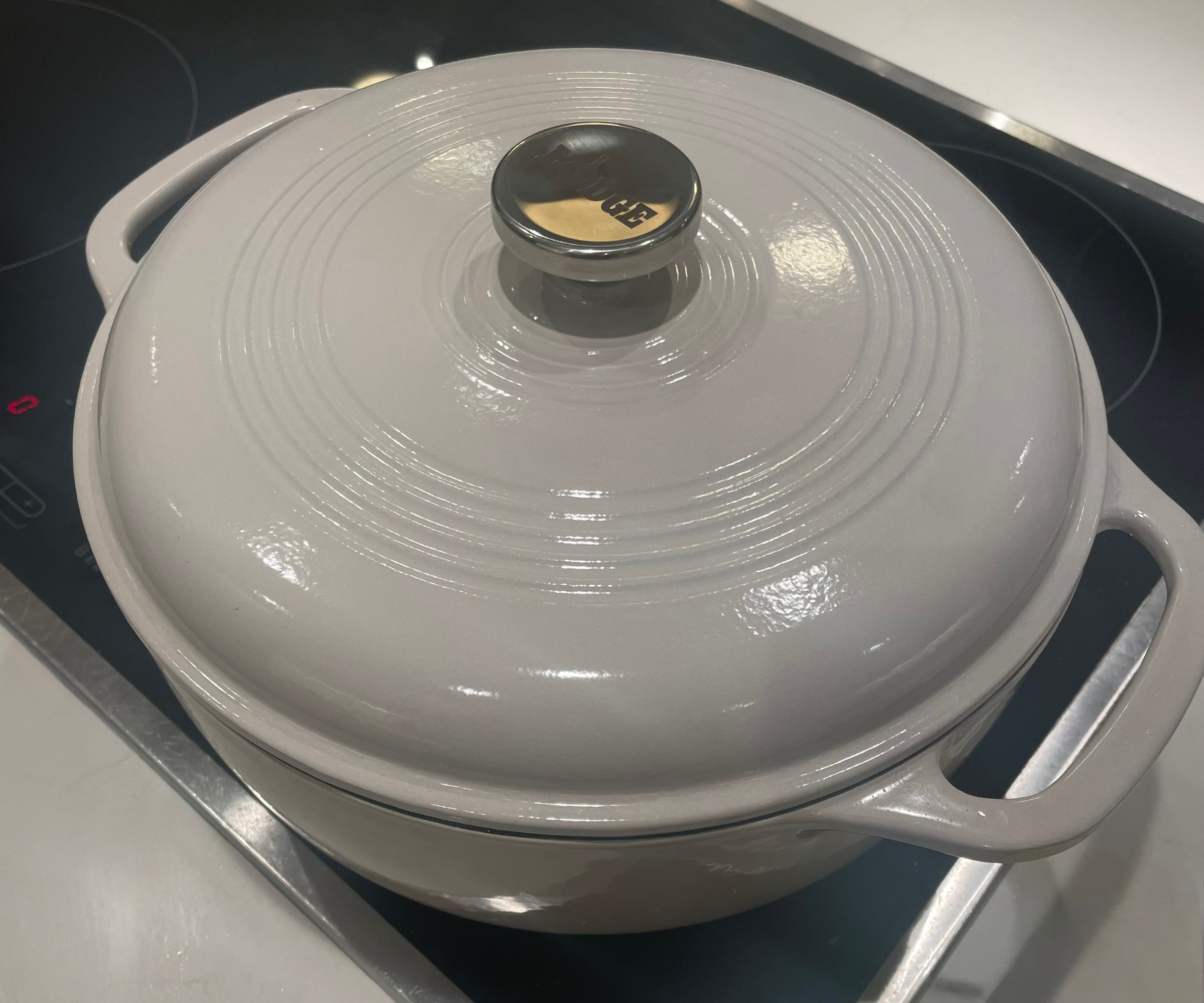
Best For: Cooks on a budget who prefer non‑toxic, built‑to‑last cookware.
Founded in 1896 by Joseph Lodge in South Pittsburg, Tennessee, Lodge is one of America’s oldest family‑owned cookware manufacturers still operating out of its original foundry town. From day one, the brand has emphasized durability, serious heat retention, and cookware you can pass down generations.
I have tested products from across the range – from review of the Lodge Chef Collection Skillet that's under $30 and the Lodge Enamel Dutch oven review. I prefer their seasoned cast iron to the enameled stuff, which doesn't feel quite as durable when you've tested quality Le Creuset (more on that in my review, linked above).
Lodge cookware isn't fancy, but it's reliable and solid. You won't find synthetic coatings or gimmicks – just heavy cast iron, ready to stand the test of time as long as you take care of it (thorough drying and seasoning do the trick).

While it may not be the smoothest, most ergonomic, or most stylish option out there, it delivers great durability and performance for under $30.
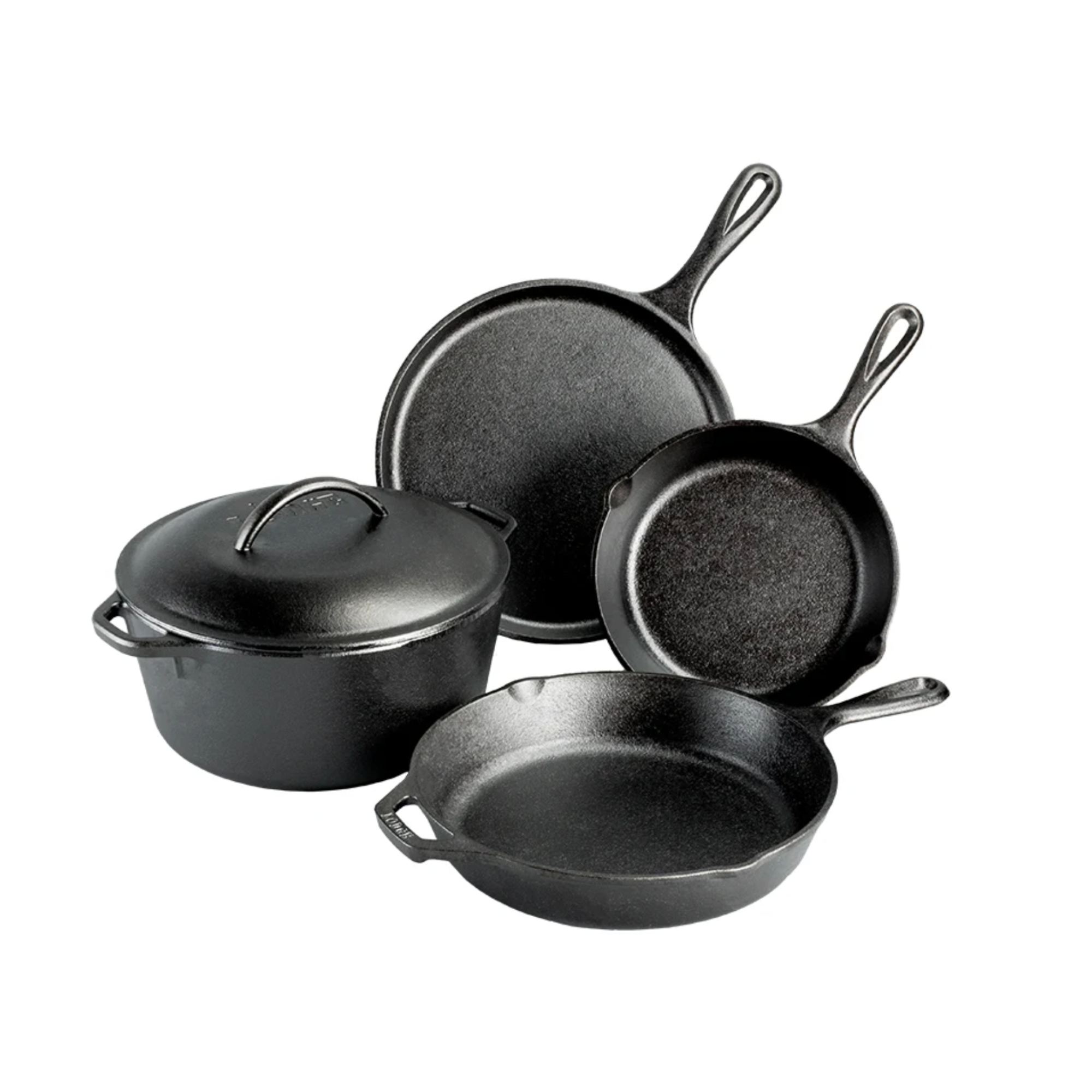
At just over $100 for five pieces, this set is an outrageously good value for money. You'll get small and large cast-iron skillets, a useful griddle (great for American pancakes and burgers), and Dutch oven workhorse for baking and braising.
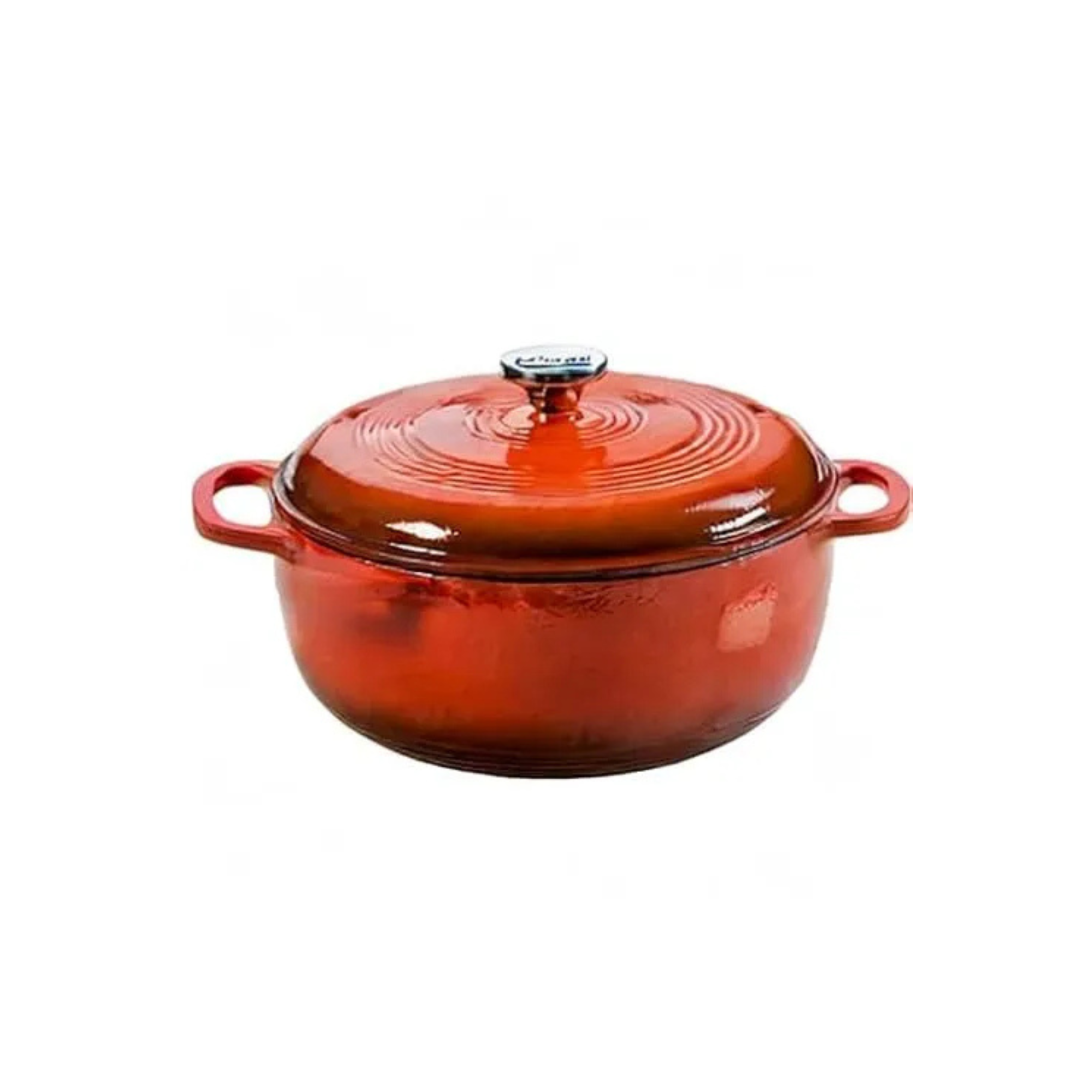
I loved testing the Lodge Dutch Oven. It's a sturdy, reliable, and attractive pot that performs well without breaking the bank. It just requires a little maintenance to prevent rust and chips; it may not have the heirloom longevity of a premium option like Le Creuset.
When to get the best Lodge deals
This one's easy. The Lodge website often runs discount codes for seasonal moments (think: Labor Day, Black Friday, Memorial Day). The discounts usually top out at 20%. Otherwise, it's worth looking at Walmart; they often have ad-hoc deals on Lodge griddles and skillets, and I'm always surprised at how deep the discounts can get over there.
Where to shop Lodge
Lodge cast iron is pretty widely available. You can get next-day delivery when you order from the Lodge Amazon storefront, and Walmart and Target both stock a large selection of the range. The official Lodge website offers some really fun limited-edition pieces, too – like the Dolly Parton cast iron collection.
Caraway
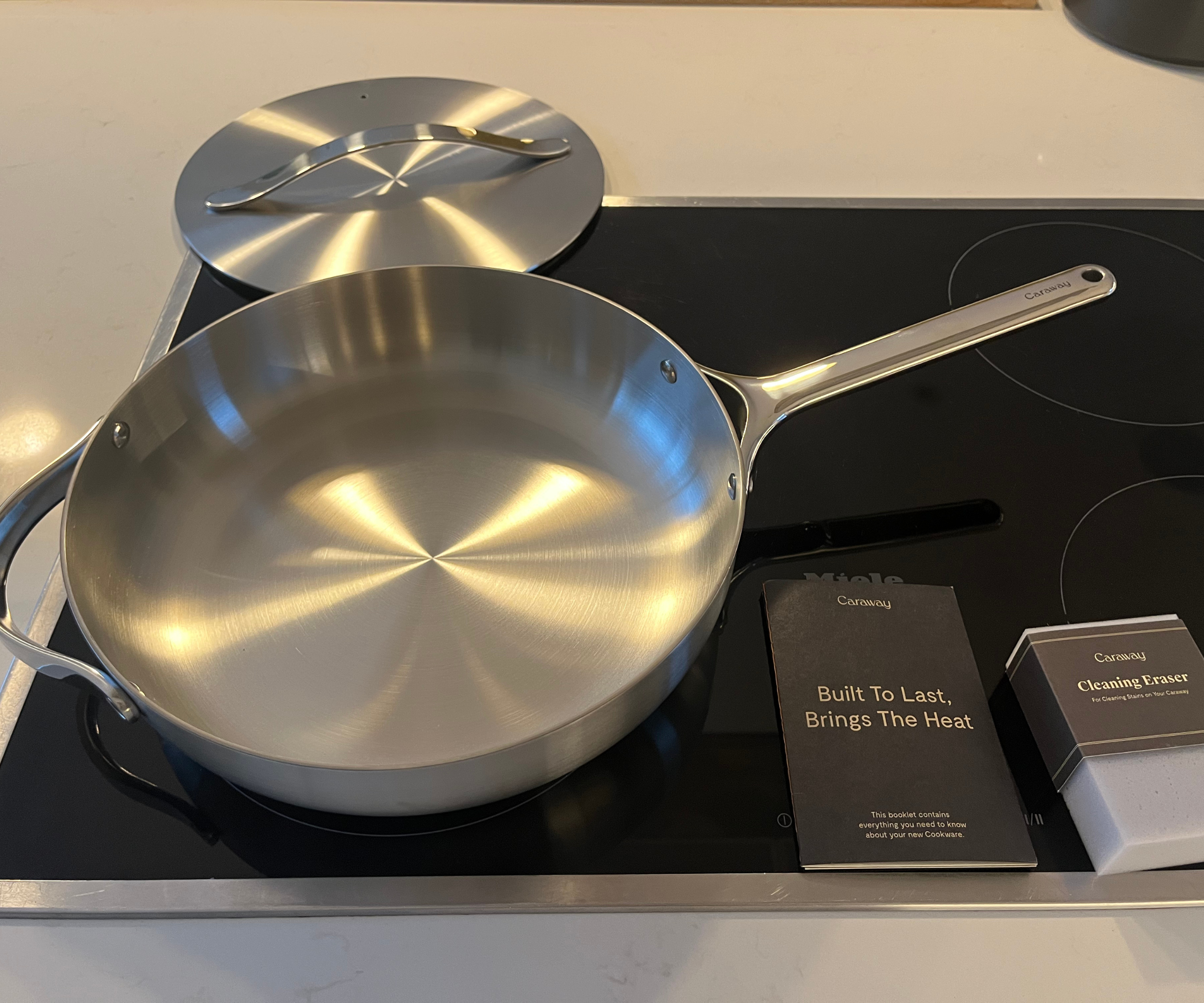
Best For: Beginner cooks who appreciate aesthetics and matching sets.
If you’re drawn to beautiful branding, lightweight construction, and excellent care guides/instructions, Caraway might be your match.
First, I tested the Caraway ceramic non-stick pan, which is the brand's most famous product. I found it stylish and easy for everyday meals, though it doesn’t deliver the intense searing of professional-grade pans. Personally, I preferred Caraway's 5-ply stainless steel collection – I found these pans more durable, versatile, and equally easy to use, as the brand provides helpful instruction booklets.
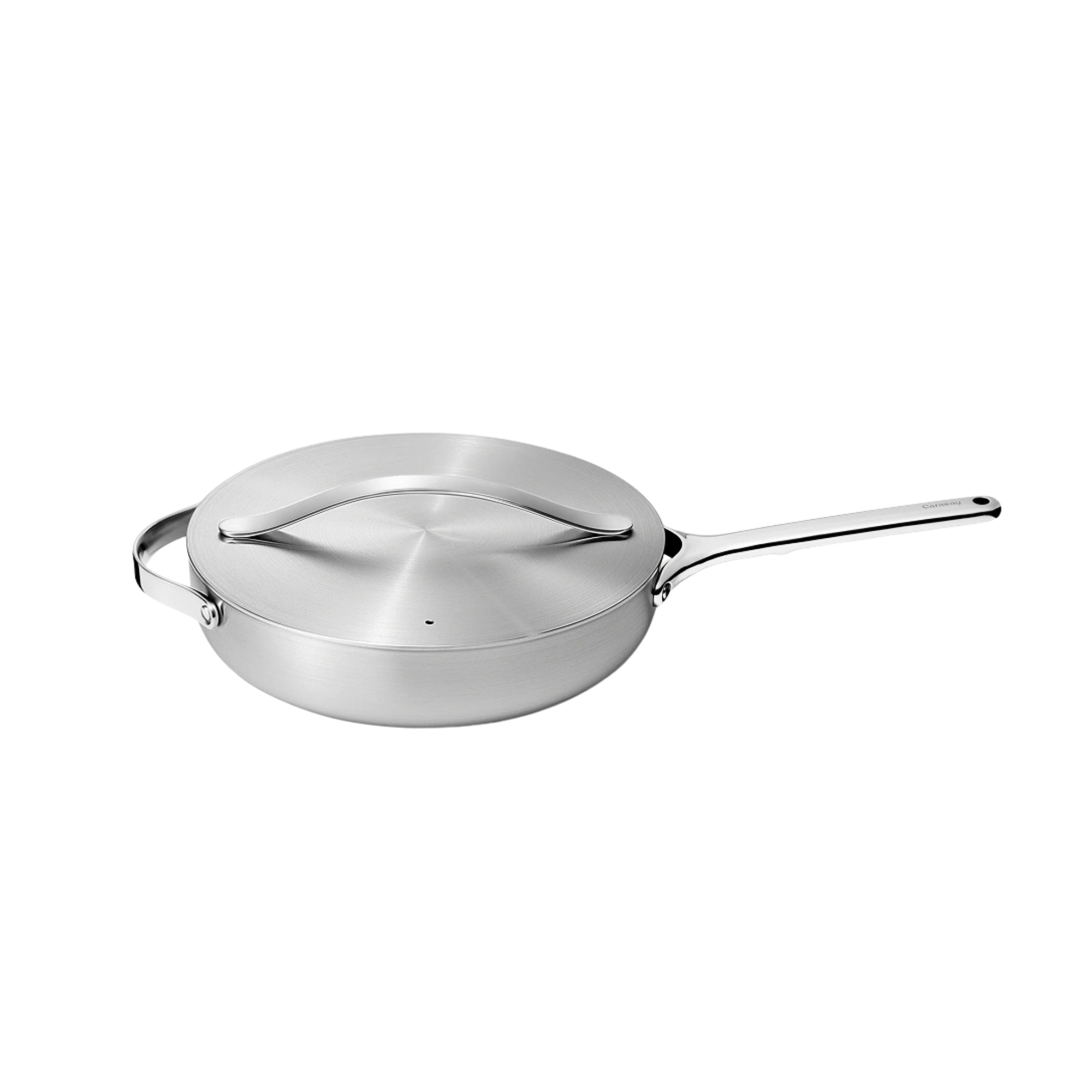
Caraway’s stainless steel sauté pan is really practical and versatile. It can handle any recipe, from pastas and curries to oven-baked dishes. Personally, I'd choose this design over their non-stick every time.
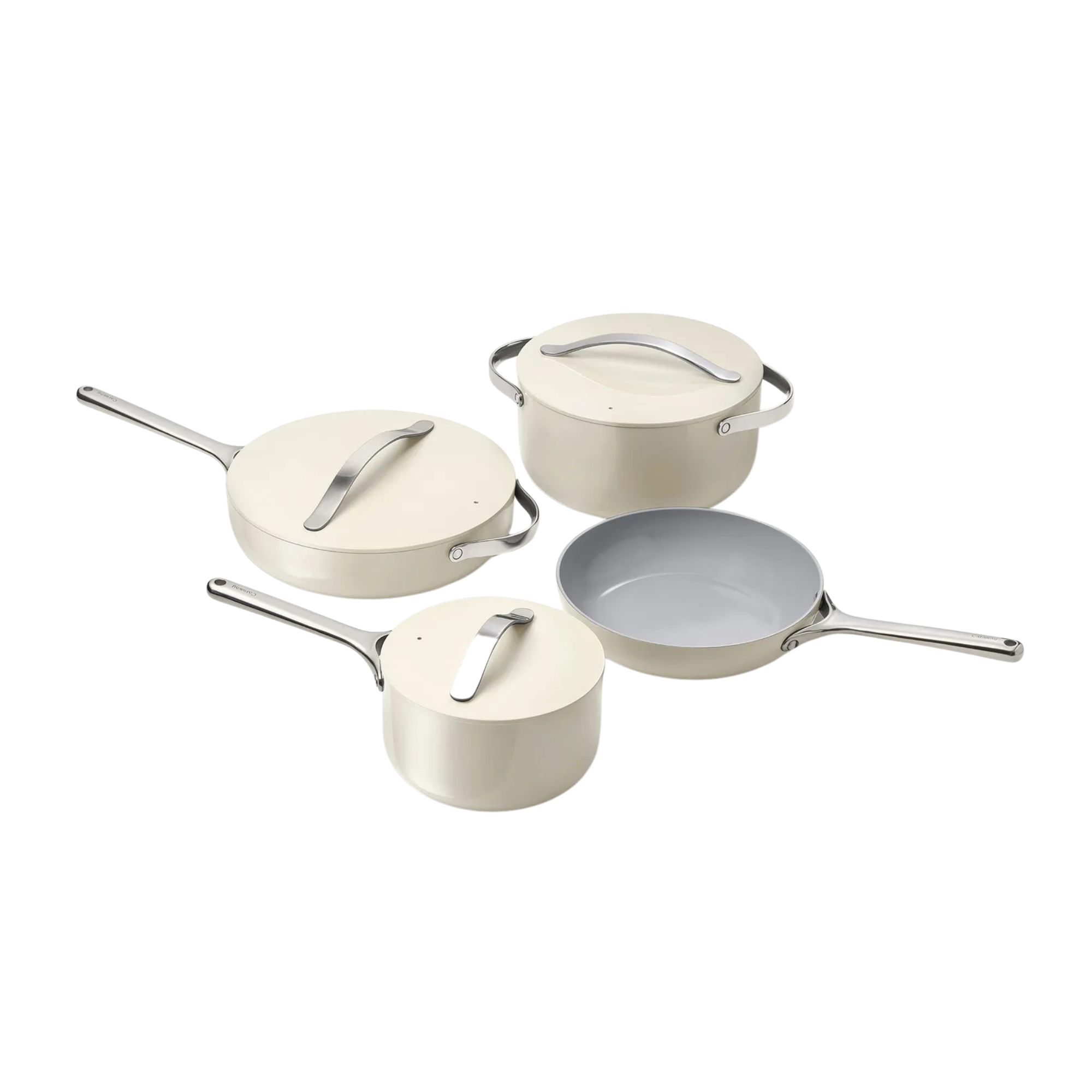
I wish Caraway offered the option to mix and match materials. I’d love to see a stainless steel sauté pan paired with their non-stick fry pan, perhaps one of their cast iron Dutch ovens, and a few ceramic saucepans thrown in. That said, this 100% ceramic set is a best-seller and particularly popular with beginner cooks and non-stick enthusiasts.

I recommend this pan to beginners who want easy non-stick cookery, with little oil and quick results. This fry pan is fast heating, thanks to the aluminum core and non-toxic, due to the ceramic non-stick coating. I think it's a bit expensive for what it offers, but it looks very stylish.
When to get the best Caraway deals
In my experience, Black Friday is Caraway's biggest sale of the year. Last time, I saw discounts of up to 40% off cookware sets. The sale tends to start in early to mid‑November, often with early access for email subscribers. So keep an eye on the Caraway website (and your inbox) for bundles, free extras, and the best discount codes. It's a good opportunity to buy gifts, too, as the Caraway items are all packaged beautifully.
Where to shop Caraway
Aside from the Caraway Home (the destination for all the cookware, as well as matching cutting boards and utensils), you'll find Caraway at Amazon (seriously, what don't they stock), as well as Bloomingdale's. I've also written about the exclusive colorways on offer at Crate & Barrel, like the 2025 Caraway Blue Lagoon cookware launch.
Our Place

Best For: Health-conscious cooks and anyone who loves Instagram-ready aesthetics.
Founded by Shiza Shahid with a mission to make home cooking more joyful, practical, and free from forever chemicals, Our Place quickly went viral on social media for its pastel palettes and best non-toxic air fryers.
When our cookware expert, Emilia, tested the Always Pan 2.0, we felt it prioritized style over substance. However, Our Place's Titanium Always Pan Pro (launched in 2024), marked a more professional-grade chapter for the brand: higher heat capability, more durability, and a non-toxic, no-coating interior that’s pretty unique in today’s market.
It’s a substantial step up – and the brand has now expanded the Titanium line into Dutch ovens, mini fry pans, and saucepans, too.
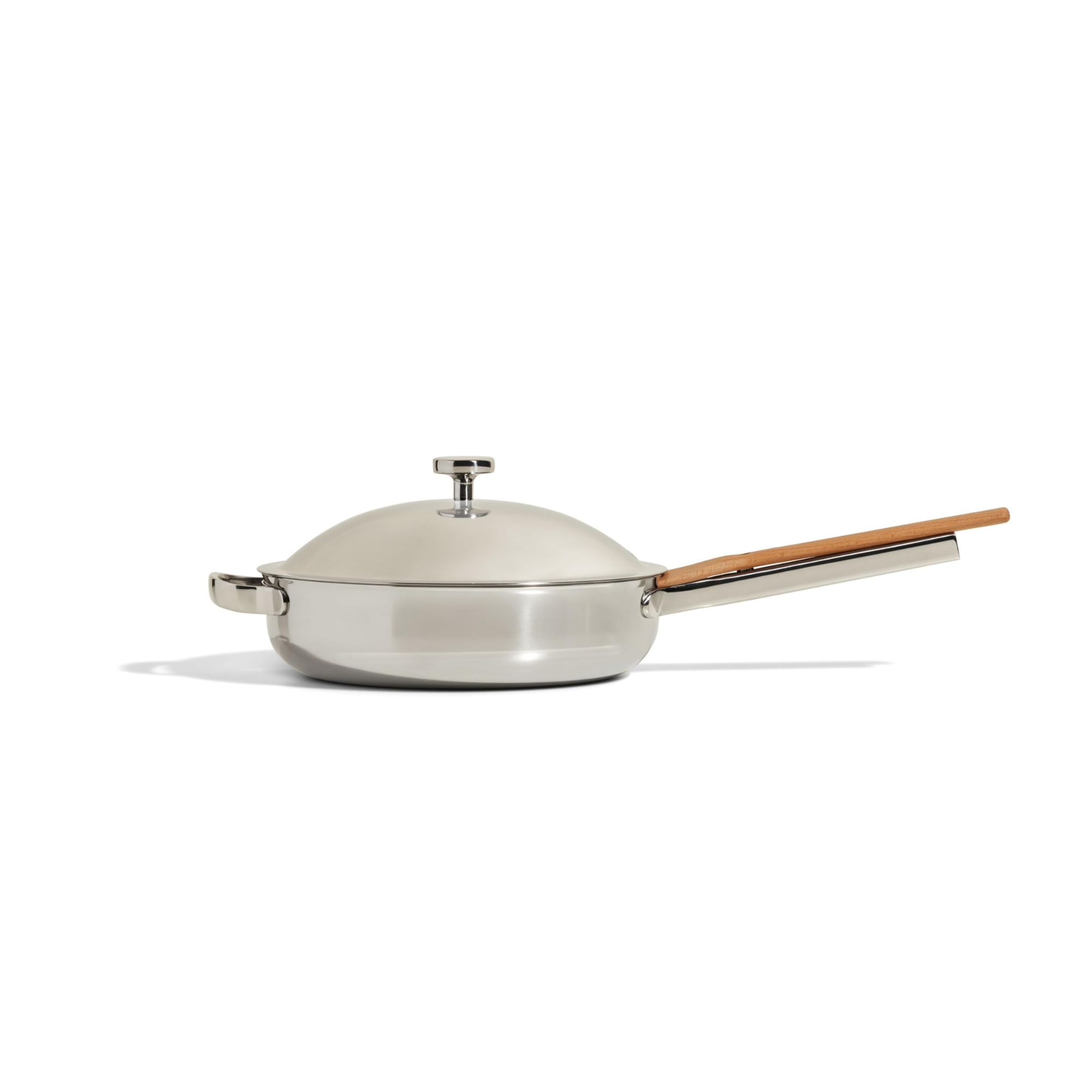
This pan is pretty and practical. The unique 'no-coating' Titanium design is dishwasher-safe (a huge win), and food still sizzles effortlessly on the grooved surface. However, it is heavy.

I gifted this set to my friends for their wedding, since it has a real 'wow' factor and will last a lifetime. Even the saucepans feature Our Place's proprietary Titanium 'No-Co' technology, which means you can sautée and simmer without sticking or flaky coatings.

I wasn't the biggest fan of this pan when I first tried it, but I have come to appreciate the versatile shape and accessories. It comes with a steaming basket, in-built spoon rest, and you can add the Our Place tagine lid for tender, slow-cooked dishes.
When to get the best Our Place deals
Like most brands, Black Friday ends up being Our Place’s biggest sale of the year. Their recent deals have offered up to around 40% off bundles and 15-30% off cookware. They also tend to run rival sales to Amazon Prime Day, which include site‑wide markdowns on their bestsellers – pans, pots, appliances, and even tableware. If you time it right, you can score really high-value pieces, like the Titanium Pro Cookware Set.
Where to shop Our Place
I'd start by checking the Our Place website to see if there are any good deals on offer. There's also an Our Place retail store in Los Angeles where you can see the range in real life, if you live close by. You can also shop at Amazon, Crate & Barrel, and Bloomingdale's.
Hestan
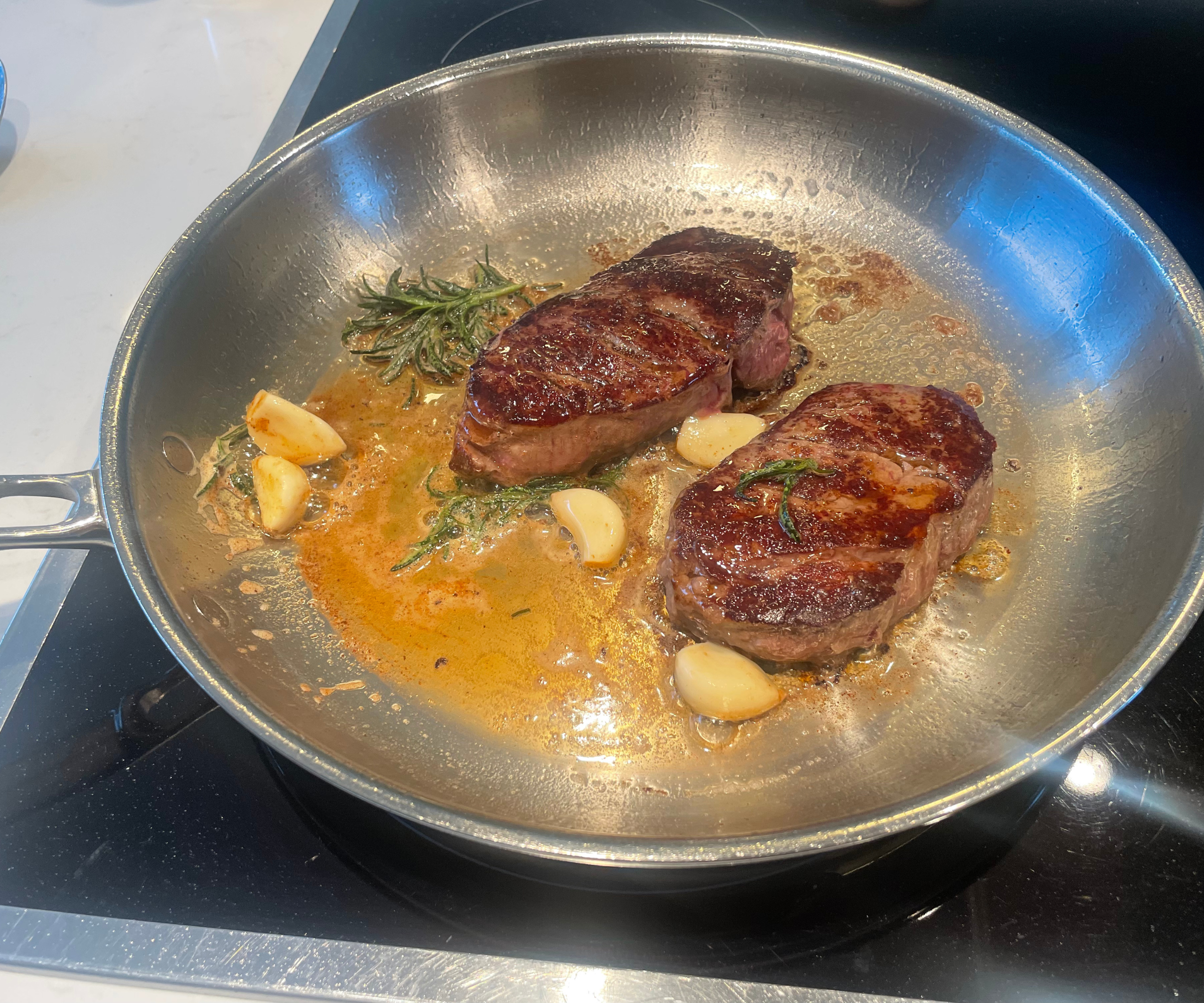
Best For: Passionate cooks who value high-end performance.
Hestan is a premium cookware brand, crafted in Italy. I have tried almost every pan in the range, and for the most part, I've been really impressed with its craftsmanship and performance.
Most recently, I tested the ProBond Luxe Skillet (pictured above). It not only looks elegant but sears beautifully. I love thoughtful touches like sealed rims and flush rivets that make cleaning easier. I’ve also tried the Copperbond pan (ideal for precise sauce making) and the Titanium NanoBond line, which features thousands of nano-layers of titanium. It’s incredibly hard and durable and seriously resists sticking.
That said, Hestan is pricey. I wasn’t a huge fan of the TITUM non-stick line; it is supposed to be highly durable, and it performed well at first, but developed a significant dent after just a few months.

Hestan's copper pan is ultra heat-responsive and favored by top-level chefs for searing and precise sauce-making. It is lined with a safe, stainless steel cooking surface that is non-reactive and easy to care for.
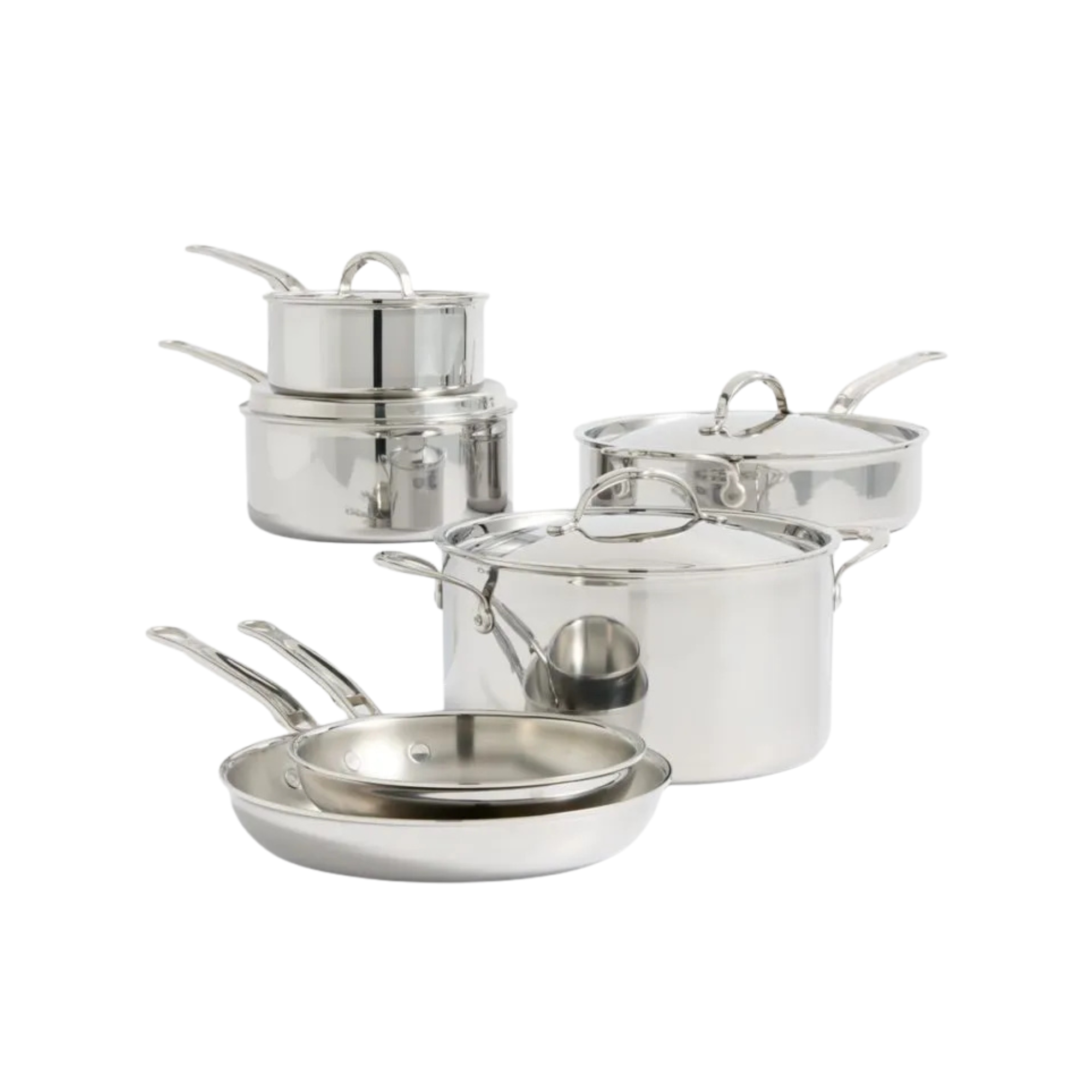
If you value both performance and aesthetics, the Hestan ProBond Luxe collection elevates everyday cooking. This set is polished with a stunning mirror finish. It is professional-level and pricey – but maddeningly hard to fault.
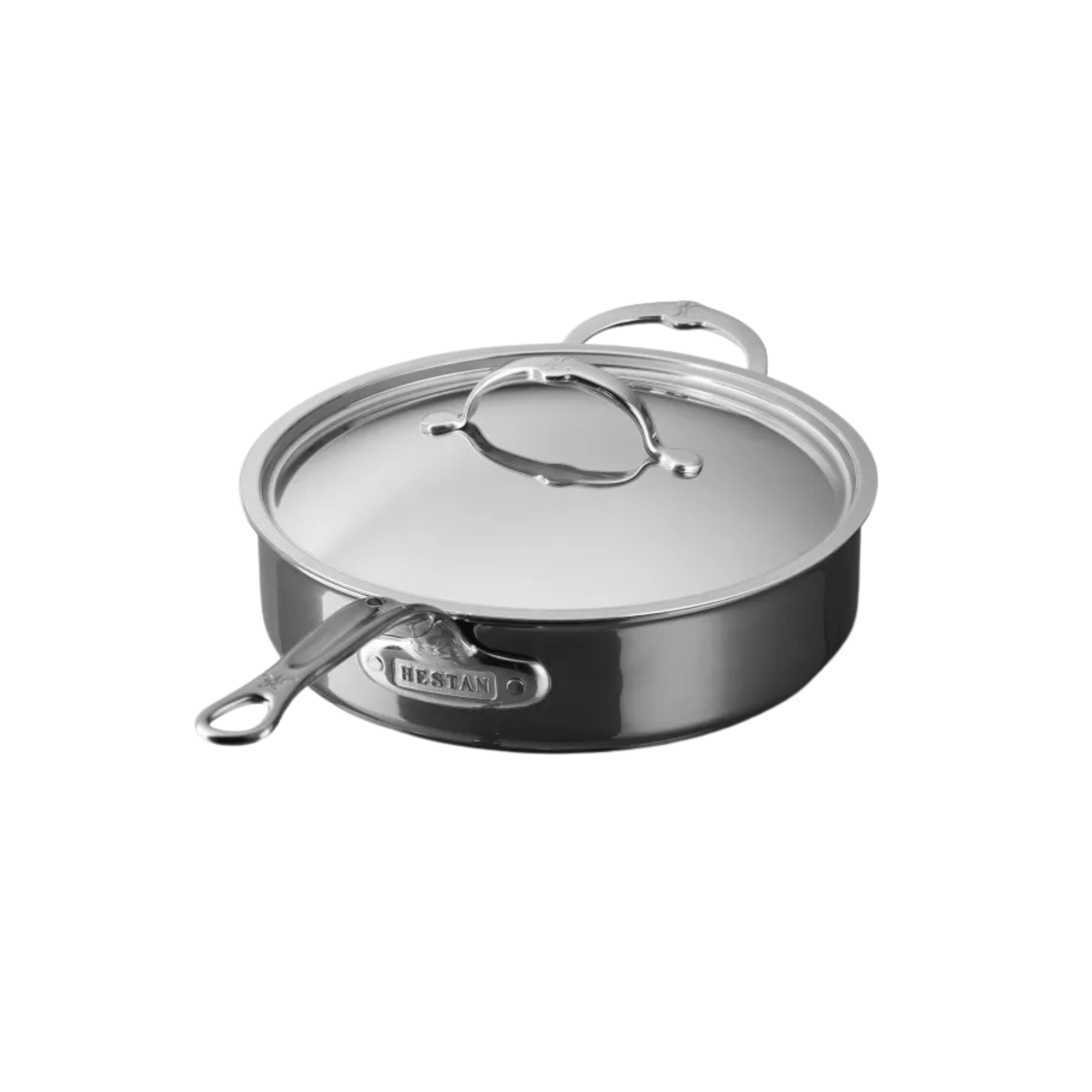
Nearing $600, it's certainly an investment, but this sauté pan is exceptional. The surface heats evenly, food glides across it with ease. It's perfect for browning, reducing, and deglazing sauces. Cleanup is quick, and the thousands of titanium layers make the pan remarkably durable.
Which Cookware Pieces Do I Need?
As a cookware tester, I own around 30 pans, but only a handful make it into my weekly rotation. This is what I'd recommend for most people.
First: a small ceramic non-stick pan for fried eggs, tofu, delicate fish, and other quick-cook foods. Then, a larger 10-inch skillet for everyday sautéing, searing, and simmering (I prefer stainless steel, but cast iron works just as well).
A Dutch oven earns its keep with casseroles, pot roasts, soups, chilli, and bolognese, while a small saucepan handles sauces, side dishes, and gravies. A large stock pot is nice to have for boiling pasta or making big batches of broth, but not essential for everyone.
Finally, I couldn't be without my roasting dishes for lasagnas and cobblers, plus a couple of durable sheet pans for vegetable traybakes and cookies. And when the holidays roll around, it's worth investing in one of the best turkey roasting pans, too.
A Chef's DIY Guide to Building a Versatile Kit
If I were buying my cookware set from scratch, this is what I'd choose.

I'd choose a HexClad non-stick fry pan for getting seamless fried eggs, omelets, tofu, and sticky cheeses. I'd probably choose a medium size for more range and versatility.
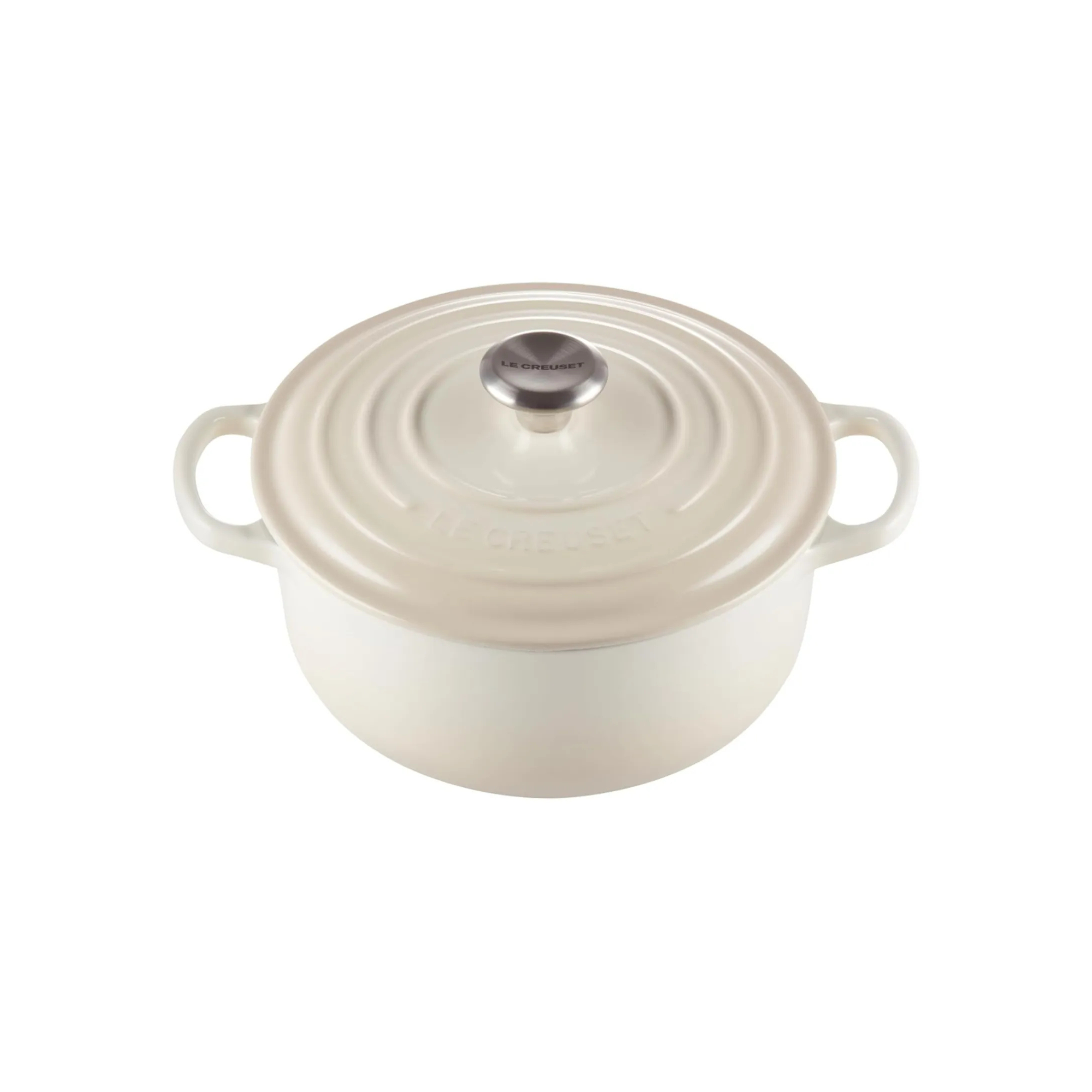
Nobody ever regrets getting a Le Creuset Dutch oven. This is perfect for one-pot dinners, baked bread, soup, casseroles, stews, bolognese, and more.

I'd pick Made In's stainless steel skillet for everyday cookery; it's hardy, lightweight, practical, and unfussy. I think the price is great value for money.

A durable set of baking dishes always comes in handy. Le Creuset's trio is sturdy, well-crafted, and even-heating – and they couldn't be easier to clean, thanks to the glossy enamel.

Everybody needs a saucepan for side dishes, sauces, or even breakfast dishes, like oatmeal. A larger, stainless steel stock pot also comes in handy for boiling pasta, soup, and stock, but if you don't cook those recipes a lot, you may not need one.

From baking holiday cookies to roasting Mediterranean vegetables for weeknight dinners, every home cook needs a good baking sheet in their arsenal.
Jargon-Buster: A Guide to Different Types of Cookware
Shopping for cookware online can be a little confusing sometimes; there are so many pots and pans to choose from, all with different names and unique selling points. It’s easy to get overwhelmed by the variety, but knowing what you actually need and what can serve multiple purposes helps you shop smarter.
Type of Cookware | Design: | Best for: |
Skillet / Fry Pan | Flat-bottomed pan with slightly flared sides | Frying, searing, browning, fried eggs, pancakes. |
Sauté Pan | Taller sides than a skillet. Often comes with a lid. | Shallow frying, braising, sauces, pastas & curries. |
Braiser | Wide, shallow pan with a heavy bottom and a lid and two loop handles. | Browning, then slow-cooking meats and vegetables. Classic braises and sauces. |
Saucepan | Small to medium pot with tall sides and a handle. | Sauces, boiling rice, grains, and vegetables. |
Dutch Oven / Cocotte | Heavy-bottomed pot with thick walls and a lid. | Stews, braises, casseroles, bread baking. |
Stock pot | Large, deep pot with lid. | Soups, stocks, pasta, big batches. |
Wok | V-shaped, spacious pan with sloped sides. | Stir-frying vegetables, noodles, meat and seafood. |
Griddle | Usually cast iron, either flat or with a ridged cooking surface. | Burgers, pancakes, and searing multiple items at once. |
Roaster / Roasting Pan | Large rectangular pan | Roasting meats, lasagnas, and desserts like cobbler. |
Sheet Pan / Baking Tray | Flat, rectangular tray with slightly raised edges. | Cookies, sheet-pan dinners, roasting vegetables. |
| Row 11 - Cell 0 | Row 11 - Cell 1 | Row 11 - Cell 2 |
What is a skillet? I grew up in London, and never heard this term until I started cooking and writing in the USA. A skillet (sometimes used interchangeably with fry pan) is a flat‑bottomed pan with relatively low, flared sides, making it ideal for frying, searing, and everyday cookery.
What is a sauté pan? A sauté pan has taller sides than a skillet, and it usually comes with a lid. This makes it better suited for tasks such as shallow frying cutlets in oil, tossing pasta, or finishing a dish in the oven with a lid on. It is not to be confused with a sautier, which has sloped, rounded sides and is designed for precise sauce-making.
Dutch oven vs Cocotte: What is the difference? A Dutch oven is a heavy‑duty lidded pot (usually made out of cast iron) with thick walls and a tight‑fitting lid. The best Dutch ovens are unparalleled for slow‑cooking techniques like stews, braising, and also for baking bread at high heat.
A Cocotte is simply the French term for an enameled Dutch oven, and they are often available in smaller sizes. Staub mini cocottes, for example, are made for serving individual portions. Dutch ovens, on the other hand, can be enameled or bare, reflecting their traditional roots in the Netherlands.
What is a stock pot? A stock pot does what it says on the tin; it is the best cookware for stock, soups, broths, and boiled ingredients, like pasta. Typically constructed from stainless steel, they are usually pretty capacious, with tall sides and tight-fitting lids.
Which Cookware Material is Best for You?
Different cookware materials heat differently, clean differently, last for different lengths of time, and respond uniquely to ingredients. In this section, I’ll explain everything you need to know about the best cookware materials, so you can figure out which one fits your kitchen habits best
What is stainless steel cookware? This material is best for rigorous cooking, which is why it is favored by professional chefs. Stainless steel is lightweight, oven-friendly, and tough enough to handle metal utensils. It excels at browning meat and building flavor for pan sauces. The material is also non-reactive, meaning it doesn't alter the flavor of acidic foods, like tomato pasta sauces or wine-infused dishes (which can sometimes be a problem with cast iron, for example).
It is almost perfect, but stainless steel cookware can get sticky if you don't preheat or oil the pan properly. It might be an adjustment for some cooks, but I promise, it's easy once you know how – I've written a simple guide on how to make any pan non-stick to help you get started. If you're wondering how to clean stainless steel, hand-washing is best if you want it to stay at peak performance. I can promise you, once you get the hang of it, stainless steel is incredibly versatile, reliable, easy to clean, and above all, safe.
What is non-stick cookware? Non-stick cookware layers a slippery surface over a (typically) aluminum core. The non-stick is there to make sure your food doesn't stick to the pan. So, if you often cook with tofu, halloumi, paneer, fried eggs, or skin-on fish. The best non-stick fry pans are a friendly choice if you're a beginner cook; it doesn't require any technique at all to get good results. However, non-stick cookware isn't a lifetime investment. They can be quite an expensive purchase for a mere 2-3 years of good use, since the non-stick degrades over time.
What is non-toxic cookware? When brands market their cookware as 'non-toxic', this usually means that it is free from harmful chemicals (like PFAS) and certified to meet safety standards. This usually includes stainless steel, ceramic, and cast iron cookware. You can read more in our guide: Best Non‑Toxic Cookware 2025.
What is cast iron cookware? A classic culinary icon that people have used for centuries. The best cast iron cookware becomes naturally non-stick when seasoned properly, which is perfect for sautéeing and searing. It excels at baking, roasting, and open-flame cooking, so I recommend it to keen campers or anyone keen to make an outdoor kitchen more luxurious. However, it is hefty and requires seasoning with oil after every use to keep it working. That's easy, but it might not suit more casual cooks. If it's poorly seasoned and not used often, you risk a metallic taste when you cook acidic ingredients or stuck-on food.
What is enamelled cast iron? This material offers the same impressive heat retention as raw cast iron, but it is layered with a glossy enamel that doesn’t require seasoning or regular upkeep. Le Creuset and Staub are the most well-known brands for enamel cast iron, famed for their glossy, colorful finishes and excellent results on braised meats. I highly recommend this cookware to families who love one-pan meals and oven-to-table serving.
Shopping By Type: Helpful Buying Guides
- Best Dutch Ovens
- Best Non-Stick Fry Pans
- Best Cast Iron Cookware
- Best Non-Toxic Cookware
- Best Roasting Pans
- Best Induction Cookware
What We Look for in the Best Cookware
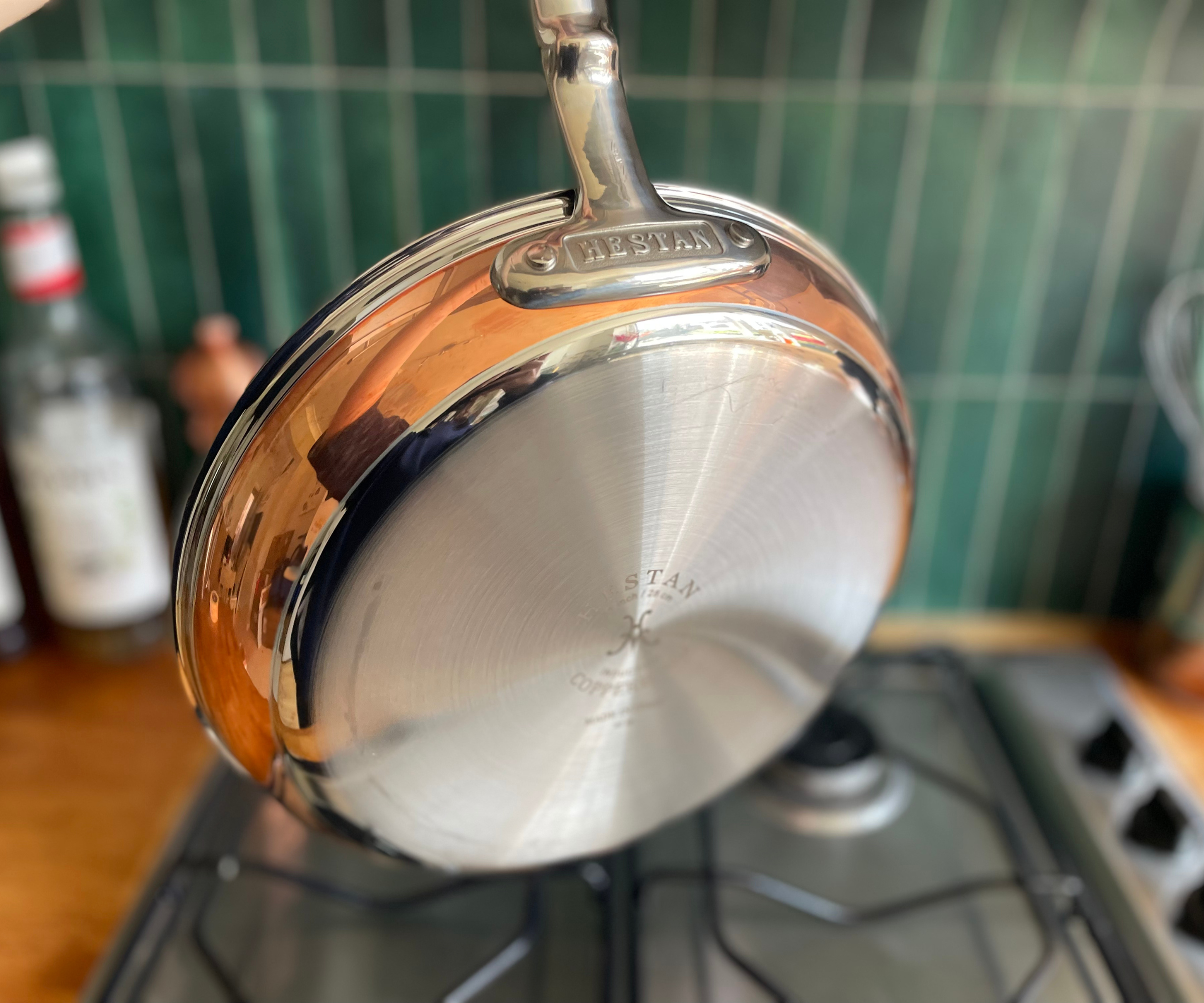
The Hestan CopperBond Fry Pan in my kitchen
- Comfortable handles: We love handles that feel secure and balanced in your hand, so even long cooking sessions feel effortless and safe.
- Quality cooking surface: Great cooking starts with a pan that browns food beautifully without sticking – because nobody enjoys scraping breakfast off a burnt pan.
- Even heating: Cookware should heat evenly all across the surface, so your food isn’t burnt in one spot and undercooked in another.
- Durability: We prefer pans built to last, made from materials that can take daily use and high heat without chipping, flaking, or warping.
- Easy cleaning: We look for smooth surfaces and flush rivets that clean up quickly and stay performing well, though we understand that long-lasting pans might need to sacrifice on tossing them in the dishwasher
- Value for money: The best cookware feels worth every penny, delivering performance, longevity, and versatility that make it a true investment – not something you'll have to replace quickly.
How We Test the Best Cookware

The best cookware has to tick all the boxes: versatility, manageable weight, brilliant cooking performance, safety, and ease of cleaning.
I use every pan I test for over a month to see how it fares over time. I've owned many pans that have been great out of the box, but start to stick, discolor and destroy my ingredients after prolonged use. There's nothing worse than this, especially when you've forked out your hard-earned money and need to buy a replacement.
When I'm testing, I'm looking for a pan that can handle everything: from delicately frying an egg to searing a steak with a perfect crust. It should feel balanced in your hand – not so heavy it’s hard to lift, but substantial enough to retain heat evenly for consistent cooking.
I like to test notoriously sticky or delicate recipes, including: tofu, sticky cheese like halloumi or paneer, steak and fried eggs. I assess how these work in the pan and the mess they leave afterwards – because no one wants to scrub endlessly after dinner.
Also, having trained at a professional cookery school and worked as a food writer and recipe editor for some of the world's leading recipe companies, from Mindful Chef to Deliciously Ella, I do have exacting standards.
Cookware FAQs
What are the Best Cookware Brands on Amazon?
You'll find most of the best cookware brands in this guide on Amazon, including Le Creuset, Caraway Home, Our Place, Lodge and HexClad.
However, I know that some people often use 'Amazon' to be synonymous with 'affordable.' I can recommend a good budget-friendly choice on the online store, too. Tramontina stainless steelstands out as a rare blend of cheap price tags and solid quality.
When it comes to roasting, Nordic Ware sheet pans are my go-to. Their bakeware is affordable, but built to last with heavy-duty materials that don’t warp, and provide even heat distribution every time.
Is Sensarte Cookware Good?
If you're wondering if Sensarte cookware is good, you've likely seen it listed for a very low price on Amazon. It’s hard to miss – often ranking among the best-selling pans, flaunting non-stick surfaces and jaw-droppingly low price point.
I've tested it, so I can say: if you're looking for an ultra-budget pan that performs well out of the box, Sensarte is that. For $17, I got a fast-heating pan that made a great fried egg and was easy to clean. The flipping was smooth, and the price really is cheap as chips. I even got a free screwdriver to assemble the handle (yes, really).
However, my overall feeling is that the Sensarte pan is very poorly constructed, unbalanced, cheaply made, and flimsy; the durability is up for debate. You’ll need to treat it with great care, avoiding overheating and scratching, and probably replace it within a few months.
If you're shopping ahead of Amazon Prime Day and need a cheap pan in a hurry (mine arrived within 14 hours, which is seriously impressive), it’s a decent deal. I would recommend choosing one of Sensarte's ceramic options that is labelled as PFAS-free though, so you can cook with less caution.
What is the most durable cookware material?
The most durable cookware materials are cast iron and stainless steel. You can use metal utensils, high heat, and not worry about chipping or flaking.
How Long Should Good Cookware Last?
In my opinion, good-quality cookware should last decades – even generations – if you take care of it properly.
Cast iron, if maintained and seasoned well, can last a lifetime and even become a family heirloom. Enameled cast iron and stainless steel can easily serve you for 15–30 years of use if you keep it clean, dry, and scratch-free.
The best non-stick cookware, on the other hand, typically lasts under five years – it needs to be replaced once the surface starts to wear and it can't be restored easily.
How Do I know Which Size Fry Pan to Pick?
The size of your pan should suit both your ingredients and your stovetop. The golden rule is: don’t crowd the pan. Air and space around your ingredients is the key to caramelized onions, seared steaks, and crispy fried eggs.
Design expertise in your inbox – from inspiring decorating ideas and beautiful celebrity homes to practical gardening advice and shopping round-ups.
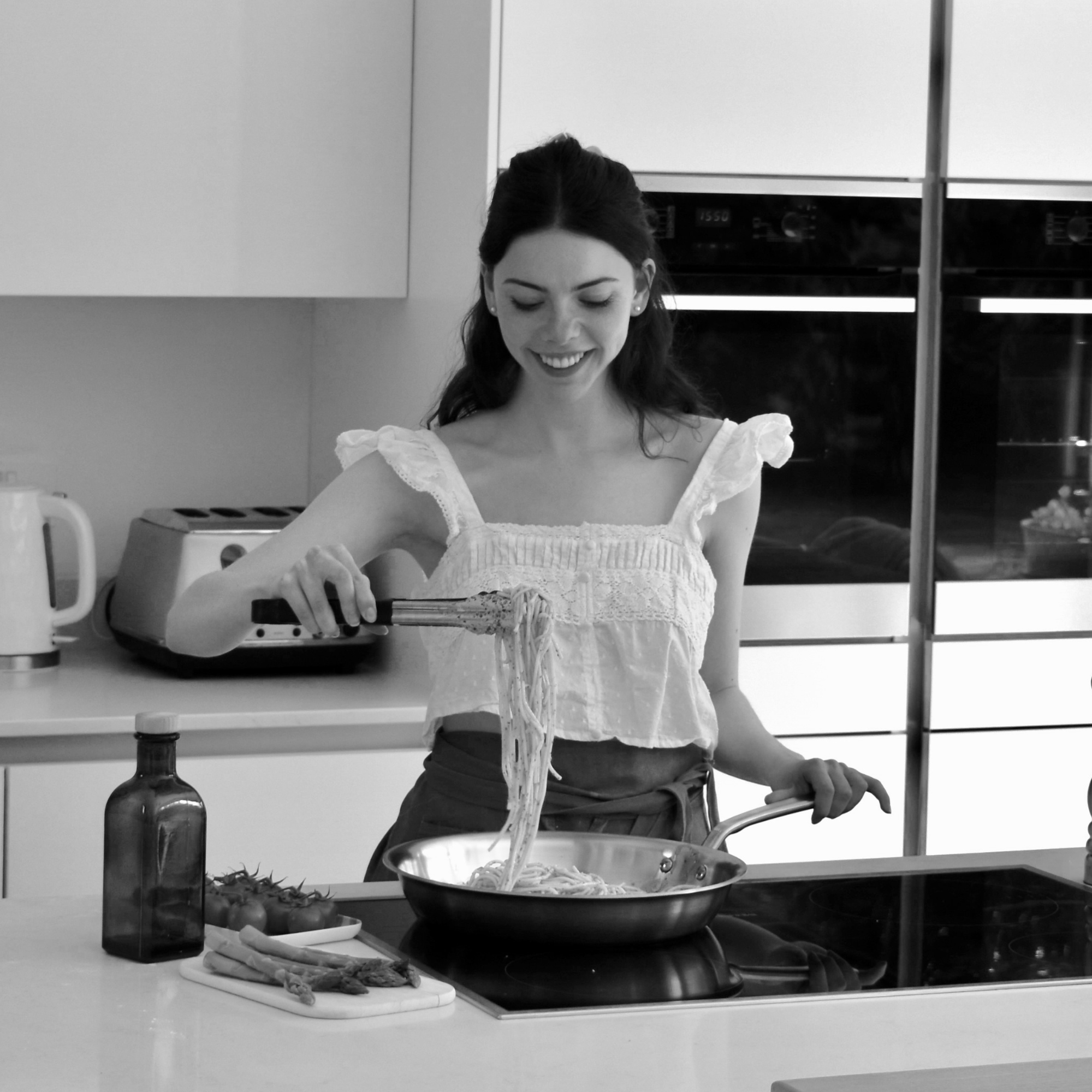
Lydia is the Kitchen Appliances Editor for Homes & Gardens, testing everything from air fryers and mixers to juicers and coffee machines. She trained in Culinary Arts at Leiths School of Food & Wine and previously served as the Recipe Editor for Mindful Chef.
